25 Blue Chips With Brawny Balance Sheets
Blue chips with rock-solid financials have been among the most secure holdings of the COVID pandemic. They should be just fine on the way out, too.
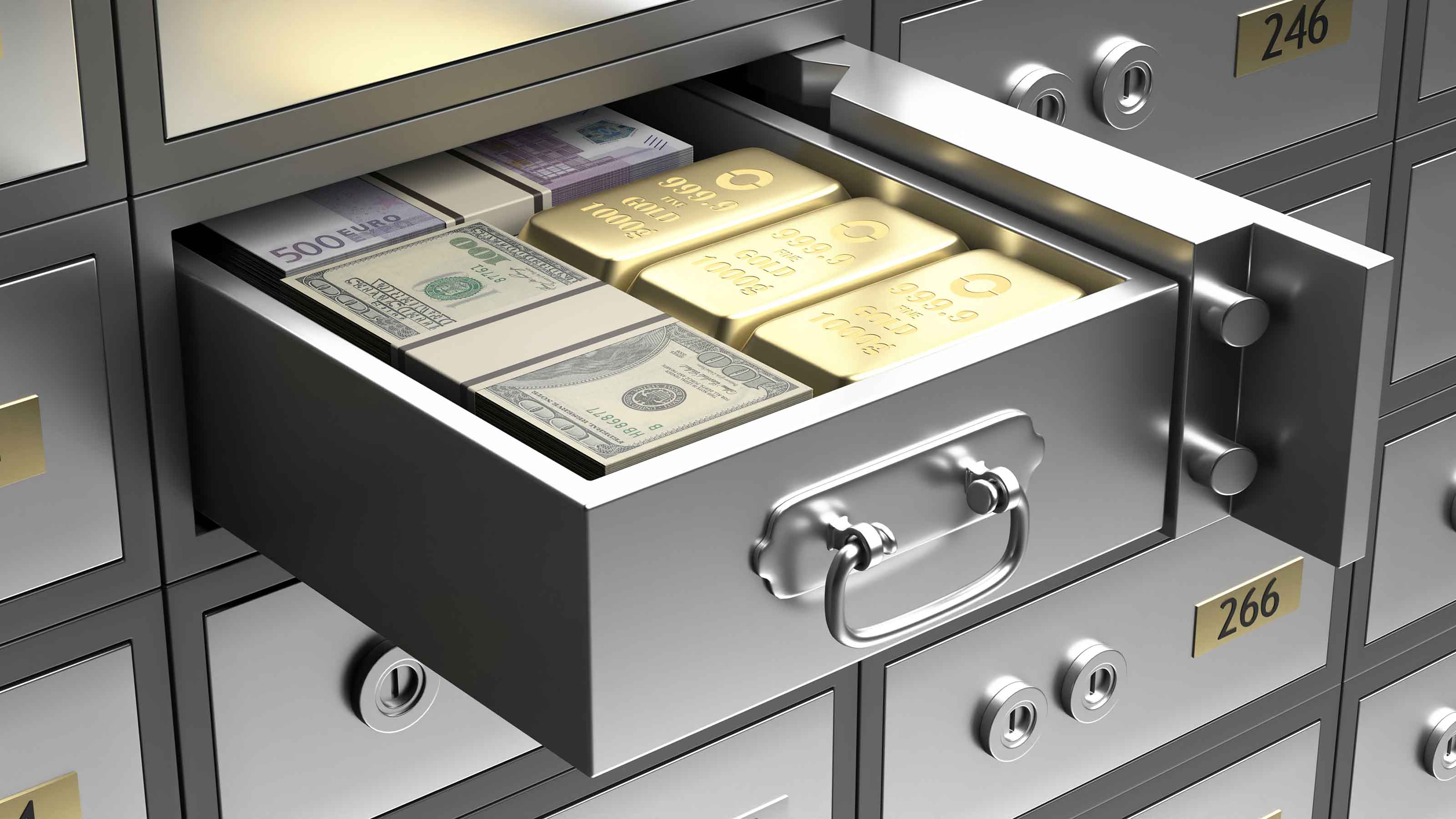

We said around this time last year that blue chips with unimpeachable financials would be the kind of stocks that could come out of the pandemic smelling the most like roses.
That indeed came to pass, but now that the economy is on recovery road, don't think it's time to abandon these kinds of sturdy blue-chip stocks. After all, brawny balance sheets and responsible fiscal management never really go out of style.
We enlisted the help of Value Line to explore a universe of blue chips that earned their A++ rating for financial strength. But naturally, investors don't want to invest in companies that are expected to tread water, so the selections also had to have projected three- to five-year annual growth of at least 5%.
Ian Gendler, Value Line director of research, said that an A++ rating requires an exceptional balance sheet with moderate debt levels and a strong cash position. He added that, to achieve growth, these companies also had to demonstrate successful operations, wide margins and significant cash flows.
But he maintains the primacy of balance sheets in assessing financial strength.
"Growth can drive earnings and share price," he says. "But when growth dries up, or the economy makes it challenging to find, a strong balance sheet is what ensures the company will live to fight another day."
Here, we explore 25 blue chips with brawny balance sheets.
Disclaimer
Data is as of April 15. Dividend yields are calculated by annualizing the most recent payout and dividing by the share price. Stocks are listed in alphabetical order.
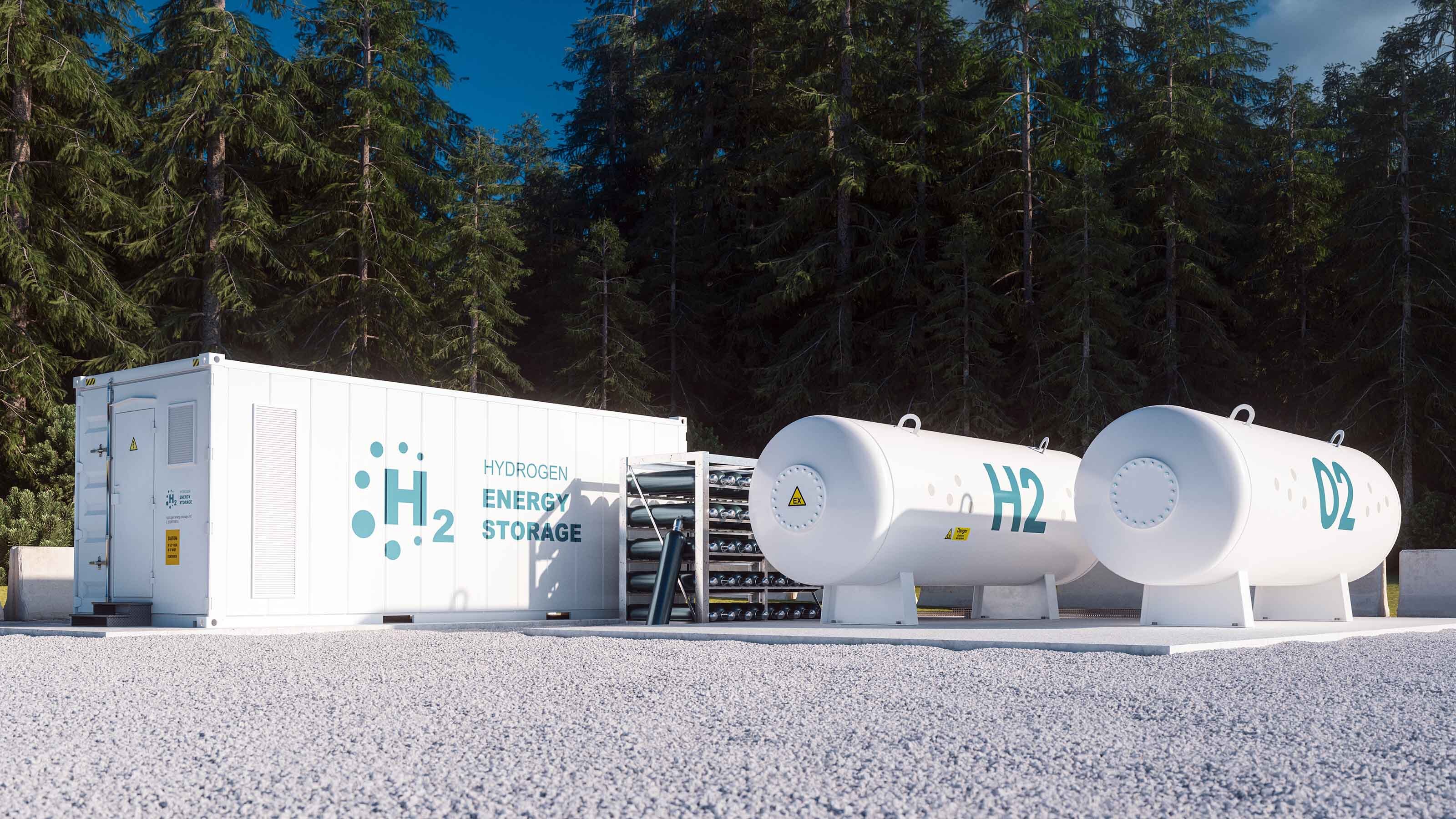
Air Products & Chemicals
- Market value: $63.7 billion
- Dividend yield: 2.1%
Here's a testimony to the financial strength of Air Products & Chemicals (APD, $287.15): It easily completed a $4.8 billion debt offering last April – just as fear was peaking about what ravages the pandemic might bring. That deal was used to finance a joint venture in Saudi Arabia, indicating that come what may, Air Products' management was looking forward.
That brought its debt up to around $8 billion, but only $470 million of its debt is due in the fiscal year ended Sept. 30. And that figure isn't nearly as intimidating when you consider APD also has more than $6 billion in cash sitting on its balance sheet. Even with the added debt, Air Products' total liabilities are roughly equal to its shareholder equity.
The management estimated the pandemic trimmed fiscal 2020 sales by 4%, and earnings per share by 60 to 65 cents – not a small number, but at earnings per share of $8.38, not tragic. This figure easily covers the $5.18 in dividends APD paid. It has far more headroom on a cash flow basis, with cash flow per share at nearly $14.
APD's first quarter of fiscal 2021, ended in December 2020, saw flat-ish sales and net income against a tough comparison over 2019, before the pandemic. But similar to other blue chips, comps should get easier from here.
Analysts also see APD producing some growth in 2021. On average, the pros expect profits of $9.03 per share in 2021, or a nearly 8% gain year-over-year.
"(Earnings) have shown strong acceleration in quarterly growth rates when adjusted for the volatility of earnings," say Ford Equity Research analysts. "This indicates an improvement in future earnings growth."
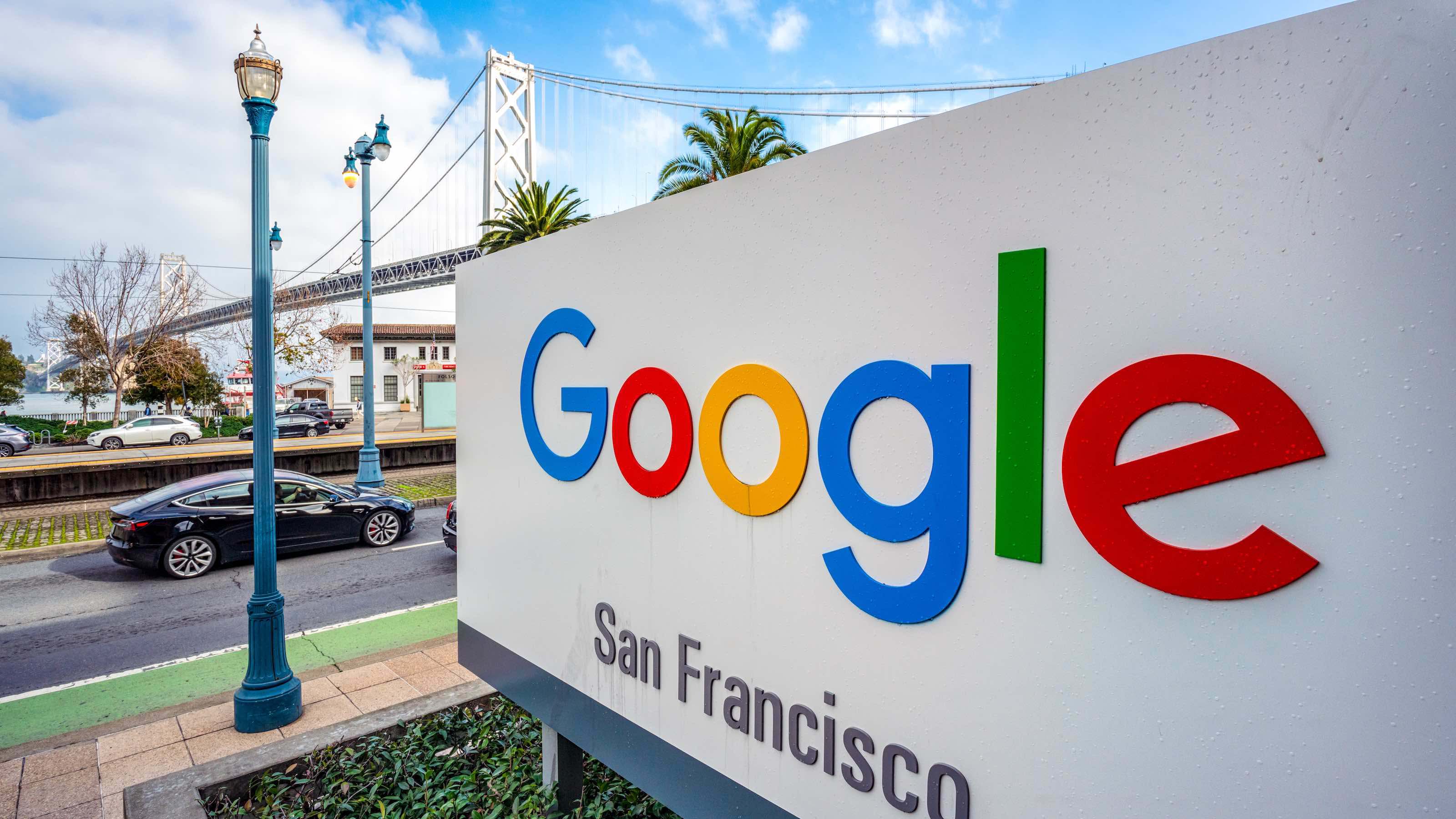
Alphabet
- Market value: $1.5 trillion
- Dividend yield: N/A
Google parent Alphabet (GOOGL, $2,285.25) has a lot of cash and very little debt, which is one of the most apparent signs of a brawny balance sheet.
Naturally, no debt would be better than having any debt, but Alphabet has so much cash, its paltry debt pile doesn't matter. Cash and marketable securities total a whopping $137 billion, against long-term debt of just $14 billion. And none of those IOUs are coming due this year.
To put that much cash into perspective, Alphabet could fund its average capital expenditures over the past two years, about $23 billion annually, for the next six years with just cash on hand. It also could finish up the remaining $15 or so billion of its share buyback authorization nine times over.
Still, the cash keeps coming in. Cash flow from operations for 2020 was $65 billion. Even after this got whittled down by $31 billion in stock repurchases, $7 billion in venture capital investments, and sundry other uses and adjustments, GOOGL still had $8 billion left over.
And Alphabet is delivering growth against this backdrop. In 2020, earnings grew by more than 17% to $40.3 billion on revenue growth of 13% to $183 billion. Both sales and earnings were below Google's 10-year average growth rates of 18% and 20% respectively, but that came as advertisers pulled in their horns amid the pandemic.
"Clearly, there is substantial inherent operating leverage in the core businesses, though management is prioritizing top-line growth vs. higher profitability, for now," says CFRA analyst John Freeman.
Among the growth drivers? Google's much-heralded cloud business, which still represents less than 10% of sales, but is growing rapidly. It has more than doubled since 2018.
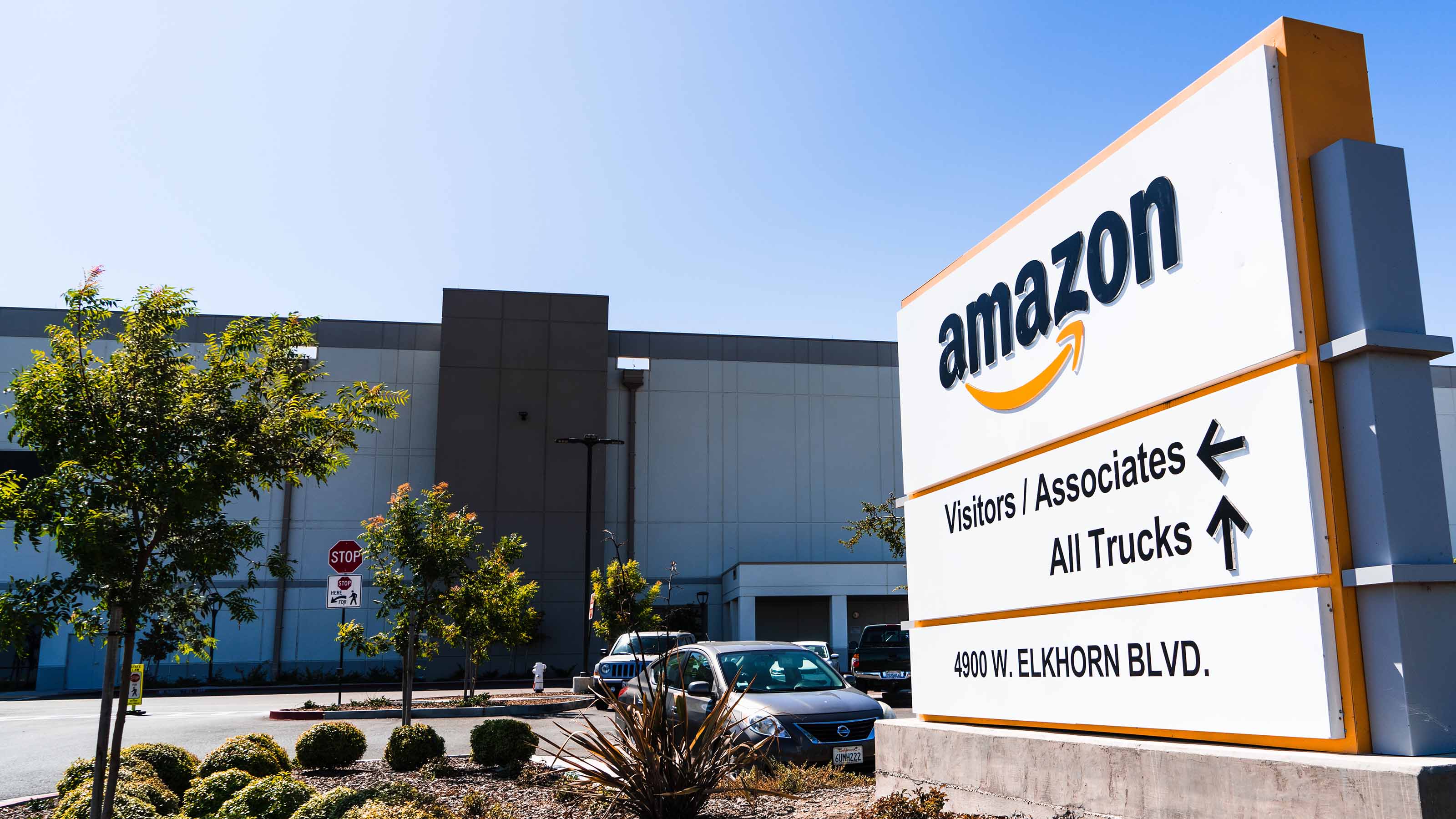
Amazon.com
- Market value: $1.7 trillion
- Dividend yield: N/A
Amazon.com's (AMZN, $3,379.09) balance sheet is unassailable.
The $84 billion in cash and marketable securities dwarfs the company's long-term debt of $33 billion. And not a cent of that debt is due this year, leaving more cash for Amazon to take over the world. Better still, Amazon's cash flow per share was about $84; while it has no dividend to pay, it does engage in outsized capital spending, at about $40 per share, or 48% of cash flow last year.
Let's compare these capital expenditures to other blue chips for perspective. A grower like Microsoft spends just 27% of its cash flow on capital expenses. Northrop Grumman, with lots of hard assets and manufacturing sites, spends 27%. Even behemoth Apple, with far-flung operations, spends a comparatively paltry 11% of its cash flow on capital expenditures.
AMZN's 48% spend puts some firmament behind Bezos' claim that most of Amazon's growth is still ahead of it.
Although Amazon's mantra seemingly eschews earnings growth, the company's performance suggests otherwise. Net income grew from about $10 billion in 2019 to about $21 billion in 2020, and the average analyst forecast for net earnings is about $25 billion and $35 billion in 2021 and 2022, respectively.
"Amazon appears to have benefited greatly from the COVID-19 pandemic and we think the online retailer will post impressive financial results," says Value Line analyst Bryan Fong.
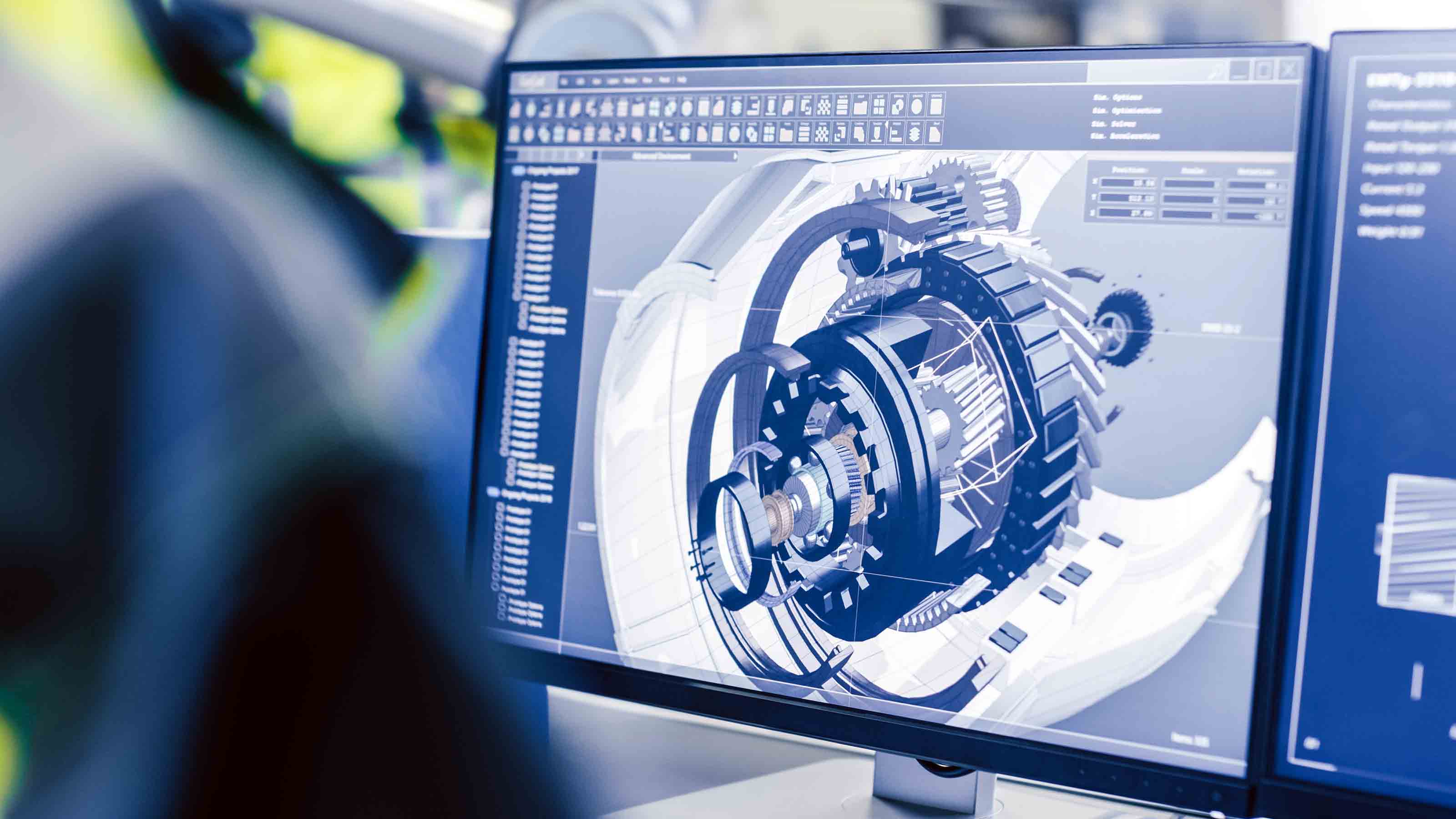
Ansys
- Market value: $32.6 billion
- Dividend yield: N/A
Ansys (ANSS, $374.62) might be among the lesser-known blue chips on this list, but it's worth putting on your radar.
CFRA analyst John Freeman notes that the engineering software developer is on the right side of Moore's law. That is, as computing power grows, the scenarios under which Ansys' solutions can be used grows too, by reducing the time and expense associated with prototyping.
But computing power isn't its only advantage. Ansys has a strong balance sheet, too. The company has more than $900 million in cash – a little more than all of its long-term debt. And none of this debt is due this year.
ANSS enjoys a market leadership position in a fragmented market that enables growth by taking share from smaller rivals, or just buying them. In 2020, it snapped up a pair: Analytical Graphics and Lumerical. The company's strong free cash flow of nearly $500 million enabled it to largely self-finance the $572 million in cash these deals required.
Ansys doesn't pay a dividend but appears adequately, if not conservatively positioned to capitalize on the growth in software simulation.
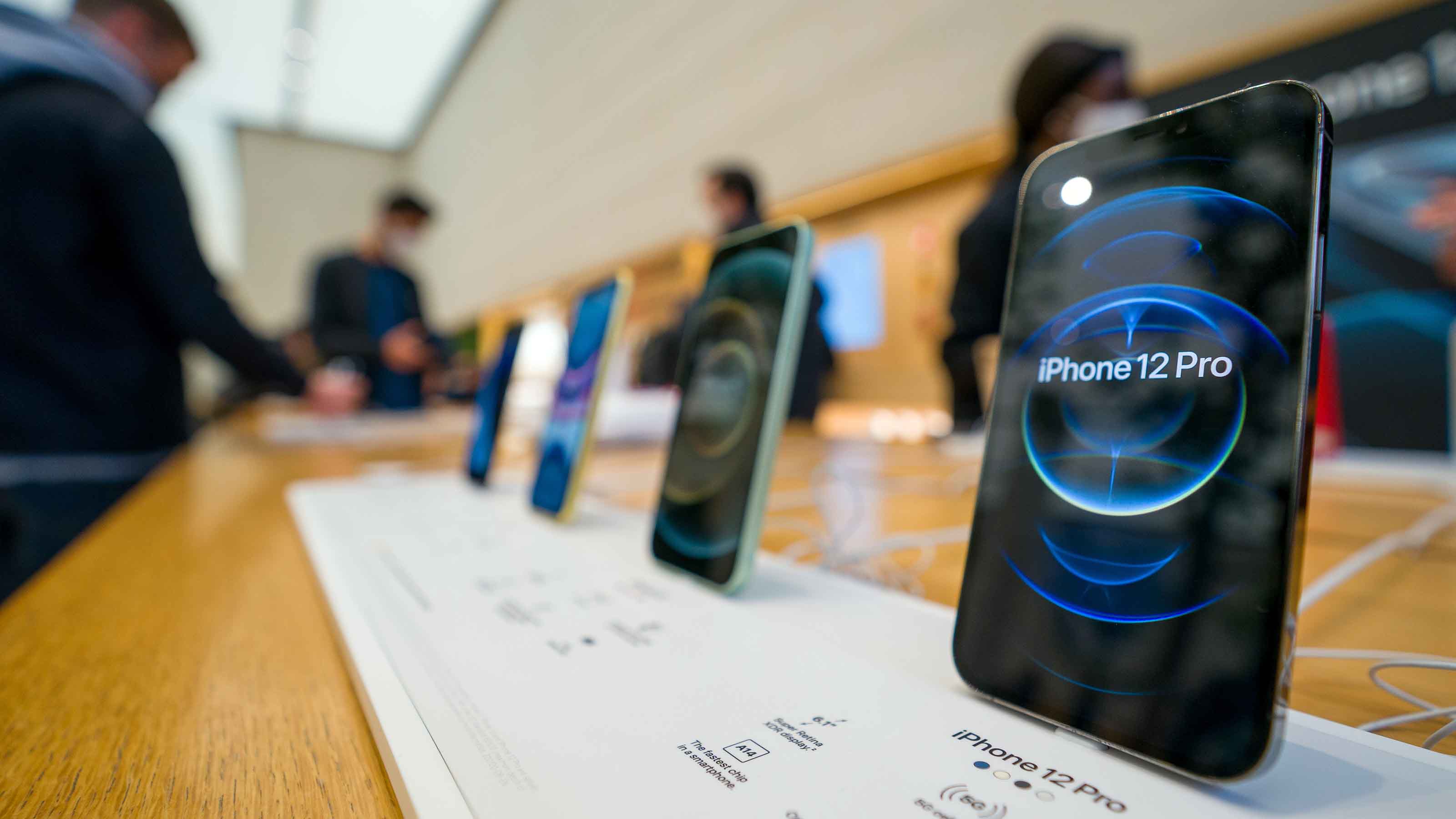
Apple
- Market value: $2.3 trillion
- Dividend yield: 0.6%
It's hard to imagine that a company with nearly $100 billion in debt has a strong balance sheet. But then, there are few blue chips like Apple (AAPL, $134.50).
With a market cap that's larger than the GDP of either Italy or Canada, large numbers need to be put into context.
For starters, Apple has $119 billion stashed away in long-term investments. In terms of outright cash on hand, Apple's additional $77 billion stash dwarfs the $13 billion of debt due in the coming year, as well as the $55 billion coming due in five years. Not to mention, it's paying exceedingly low rates on that debt.
Apple generated $4.03 per share in cash flow last year. That's nearly five times the annual dividend of 82 cents per share, and more than three times Apple's combined dividend and other capital spending. On top of all that, Apple's cash is expected to swell over the next couple of years, to $5.25 per share this year, then $5.75 per share in 2021.
Under these circumstances, it's difficult to imagine a scenario where Apple could not continue to invest in its growth and continue to pay shareholders a dividend.
AAPL has about $32 billion left on a $225 billion repurchase authorization. Apple has long been an avid buyer of its own shares, repurchasing $403 billion worth (roughly the GDP of Philippines) since buybacks started in 2012. Given that Apple purchased about $72 billion of its shares last year, another authorization might be in the offing.
Meanwhile, the company's momentum shows no signs of abating. A de facto global work-from-home mandate has helped its Mac business, the rise of 5G is driving iPhone sales, the wearable segment remains a source of future growth, and the high-margin Services division is becoming a larger portion of Apple's revenue mix.
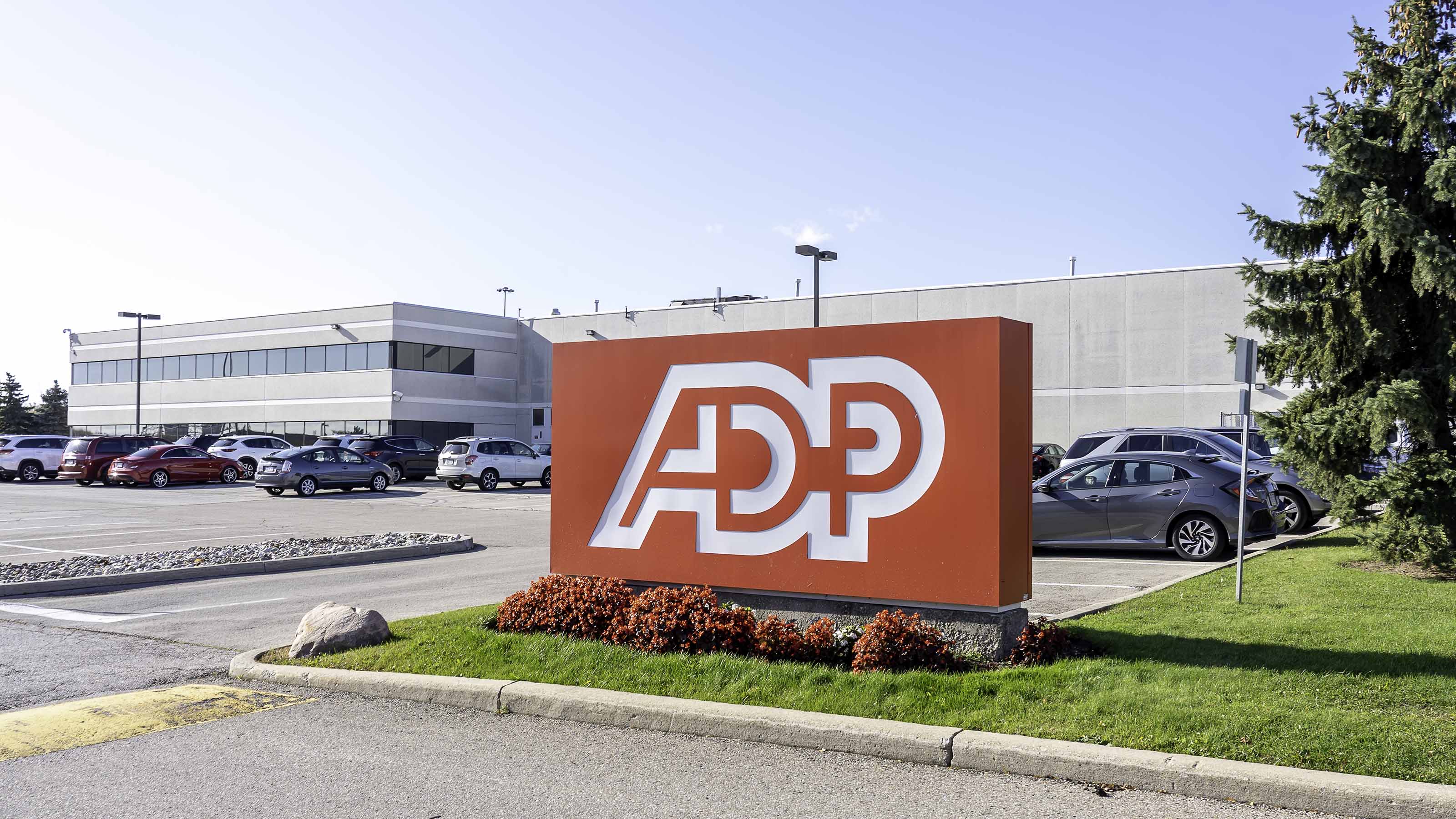
Automatic Data Processing
- Market value: $82.3 billion
- Dividend yield: 1.9%
Automatic Data Processing (ADP, $191.89) is a steady Eddy that has grown sales, earnings and dividends at a respective 6%, 7.5% and 9.5% annually over the past decade.
There is a bit of chicken-and-egg dynamic in the company's balance sheet. That is, unlike meteoric growth, which eats cash and can lever up balance sheets, steady growth can keep a balance sheet in check. But a strong balance sheet can also help a company deliver steady growth by enabling it to manage calmly through a rough patch.
One such patch might be at hand. Although ADP's average earnings growth over the past decade has been a rather impressive 7.5%, and though profits are expected to expand 9% annually over the next few years, analysts don't expect much out of 2021. The consensus forecast for this year's earnings is $2.5 billion – subpar advance of just 3%.
It's easy to trace this malaise to the pandemic, of course. Dips in employment have led to lackluster check processing volumes in ADP's Employer Services group, which at 65% of total revenues is its largest unit.
But as of the end of 2020, ADP had no debt due. And ADP's overall debt load, at about $2 billion is a neat and manageable 33% of shareholder equity. Cash flow per share, which average analyst estimates indicate will climb only slightly higher, to $6.80 per share from $6.59 in 2020, will easily cover an expected $4.15 per share in dividends and capital spending.
Rough patch or not, ADP management seems to believe there's nothing that inspires confidence like a dividend increase – which is why it's been delivering them for nearly a half-century, easily qualifying it as a Dividend Aristocrat. Its most recent increase was a 2% uptick in November 2020 to 93 cents per share.
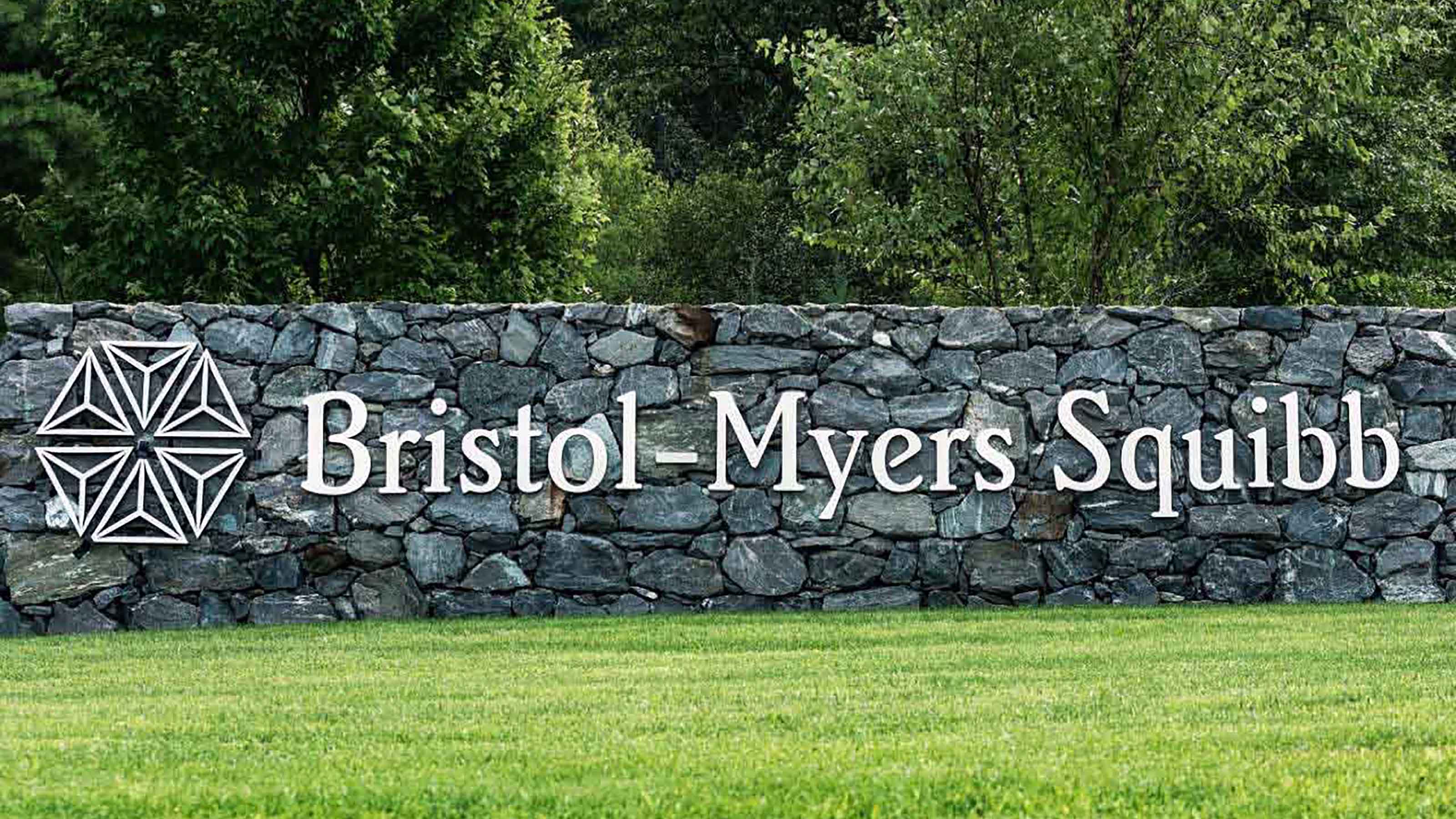
Bristol Myers Squibb
- Market value: $144.5 billion
- Dividend yield: 3.1%
Bristol Myers Squibb's (BMY, $64.44) 2020 acquisition of MyoCardia for $13 billion and its 2019 acquisition of Celgene for $74 billion produced a set of adjustments, estimates and revisions to produce a loss on a GAAP (generally accepted accounting principles) basis. On a non-GAAP basis, which attempts to "normalize" the impacts of one-time changes that come with acquisitions, earnings jumped by 37% to $6.44 per share.
To be fair, BMY has one of the highest debt loads on this list of blue chips at nearly $48 billion thanks in large part to the Celgene acquisition, but analysts at least seem to think it'll be worth it.
"We see the Celgene deal creating a faster-growing company with a less concentrated drug portfolio despite the emergence of the COVID-19 pandemic," says CFRA's Sen Hardy.
Bristol Myers also has a host of other current liabilities for things such as royalties and rebates, which total $14 billion. That's notable.
That said, BMY's position is stronger than it appears. For starters, the company has nearly $16 billion of cash on its balance sheet, and debt due in the comping months of just $2.3 billion, for nearly eight times coverage. And cash flow from operations last year came to $14 billion.
Access to low-cost debt, because of its strong credit rating and strong operating cash flows, leaves little doubt that Bristol Myers can fund the intensive capital expenditures the pharma business demands as well as maintain its healthy dividend of about 3.1%. Overall, dividends last year were just 29% of operating cash flows.

Cadence Design Systems
- Market value: $41.2 billion
- Dividend yield: N/A
Some analysts consider silicon-design software and hardware Cadence Design Systems (CDNS, $147.59) to be richly valued at current prices. Given a 525% run over the past half-decade, including a near-doubling in the past year alone, they might be right.
One reason for the run in Cadence shares might be demand for its' design software for integrated circuits is being driven by artificial intelligence, 5G communications, and large-scale computing – trends that show no signs of slowing down.
Rich valuation notwithstanding, Cadence's balance sheet is positively old-school. At about $350 million, the company has a paltry amount of debt compared to its $930 million in cash. Shareholder equity, at $2.5 billion, is more than seven times the debt load.
Cadence is throwing off cash to the tune of $3.00 per share, and with no dividend to pay, can easily cover its capital spending of merely 30 cents per share. This kind of "dry powder" has enabled Cadence to make opportunistic acquisitions over the years, such as its February 2020 purchase of Numeca, which rounded out its offerings in computational fluid dynamics for aerospace, automotive, industrial and marine markets.
CDNS ended 2020 on a high note, with adjusted earnings of $2.80 per share, up 27% year-over-year. The non-GAAP measure accounts for acquisition costs and amortization of intangible assets, both nonrecurring in nature. For the current year, the average estimate is for $3.01 in earnings, or a 7.5% improvement.
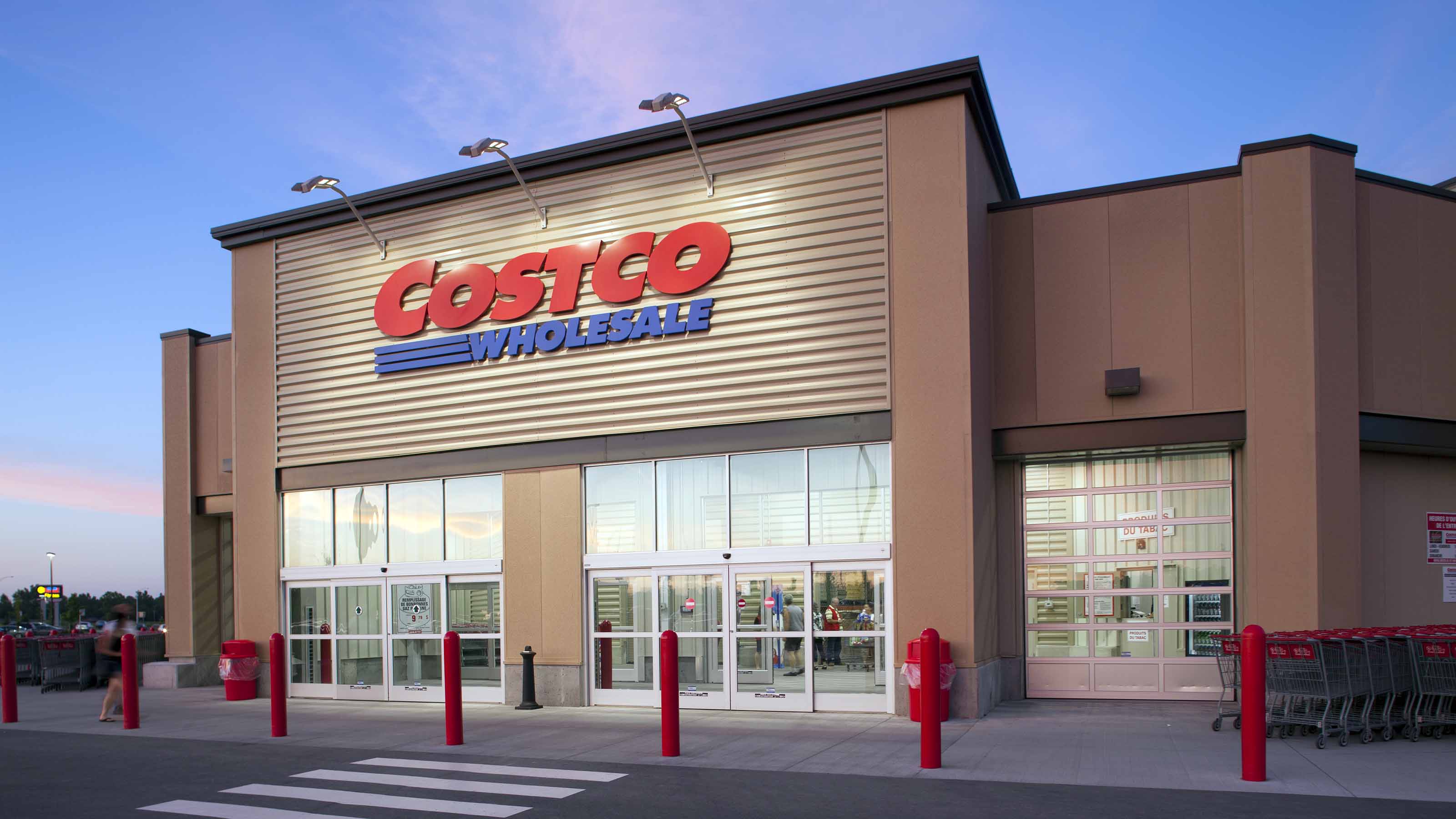
Costco Wholesale
- Market value: $163.5 billion
- Dividend yield: 0.8%
The pitch for Costco Wholesale (COST, $368.80) last year was that nearly 50% of its sales were in food, mostly insulated from the pandemic, and this would provide some buoyancy for the company's discretionary items, such as appliances and its soft lines. And this thesis held up well for several quarters.
However, a miss on earnings for the three months ended Feb. 14, has made some investors nervous.
That's OK. Costco might be among retail's biggest blue chips, but it still goes through some of the same motions: steps forward, steps back. Unlike many retailers, however, Costco has a strong balance sheet to see its way through the volatility. At $9.3 billion, it has more cash than its $7.5 billion in debt, and debt due this year is negligible by comparison.
Compare this to, say, BJ's Wholesale Club (BJ), where total debt is nearly three times cash on hand, and debt coming this year of $260 million is roughly six times the $44 million it had in the bank at the end of its last final year.
How does this play out in the real world? That growth-inducing moves such as bulking up on inventory, hiring in advance of sales and investing in e-commerce – all of which eat cash – are a lot easier for Costco than BJ's.
"A strong balance sheet tells you a lot about a company, but comparisons to other, similar companies, can offer some insights into its competitive position," says Value Line's Gendler. "That might mean when the consumer spending returns in earnest, backed by $1.9 trillion in stimulus, Costco's strong balance sheet means it may be positioned to take share from rivals."
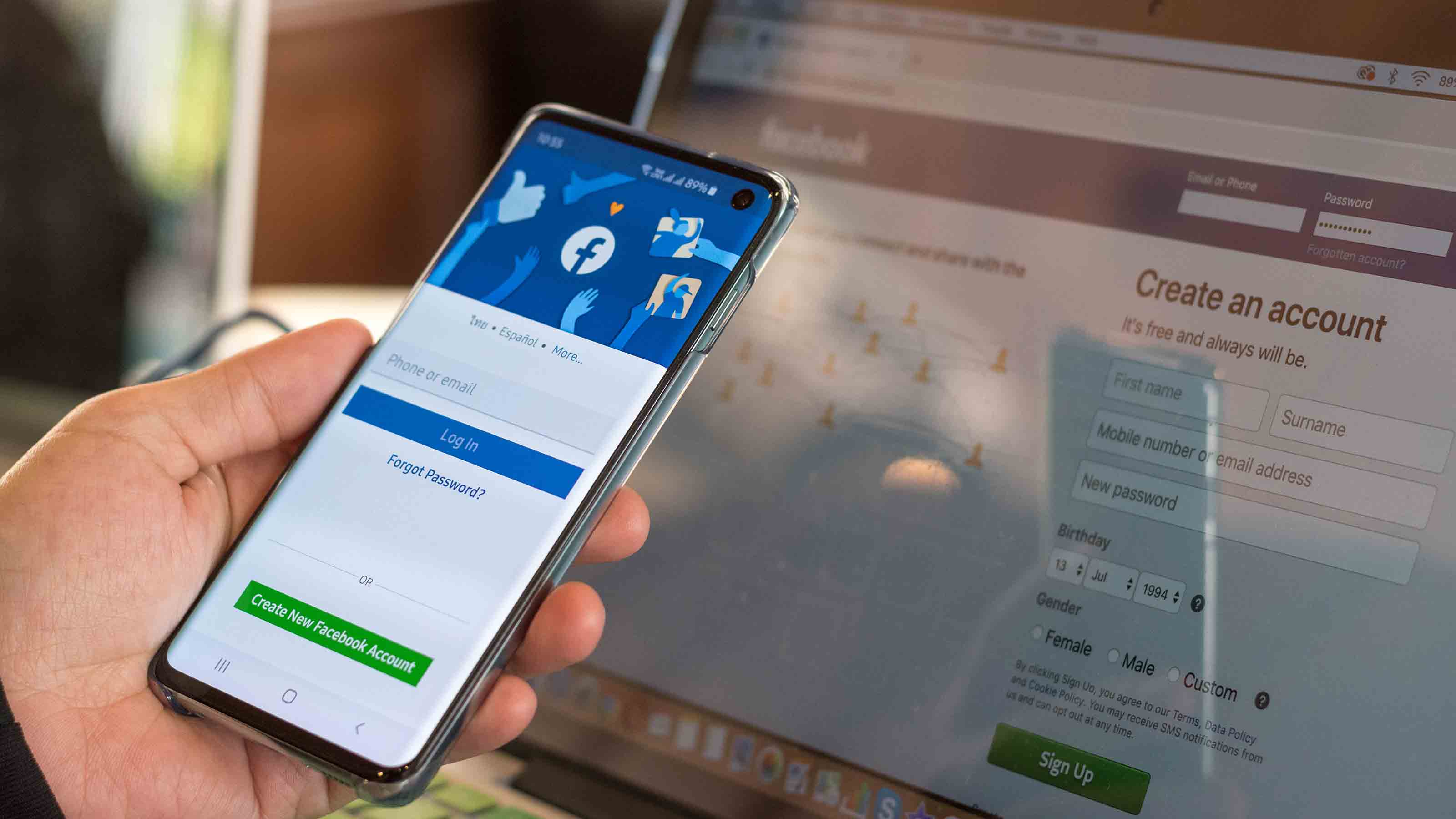
- Market value: $876.8 billion
- Dividend yield: N/A
Blue chips that have no debt are already well on their way to having a great balance sheet. However, a debt-free company might have liabilities due within a year that are multiples of their cash and other reasonably liquid assets. That would be perilous.
Not the case with Facebook (FB, $307.82), which has no debt, and which has cash on hand of about $62 billion that's four times its current liabilities and twice all of its liabilities. While Facebook is the model 21st century enterprise, its balance sheet is positively classic.
The biggest liability Facebook has – other than regulation and a nasty image in some circles, of course – is of passing interest in the form of nearly $10 billion in leases for its offices around the world. Leases have always been a liability for companies, but thanks to recent changes to accounting regulations, they are now up front as a line item on the balance sheet rather buried in the notes to the financial statements.
Given the constellation of its assets and liabilities, Facebook is liquid. But it's getting more so with cash flow from operations, which came to $39 billion last year. It spent the bulk of this on capital expenditures for future growth, about $15 billion, making $6 billion venture capital investments, and buying back more than $6 billion of its own stock.
Naturally, analysts think capex will be important for Facebook.
"Spending on infrastructure will support increasing user engagement," says Value Line analyst Michael Napoli, "and investment in new technologies should pay off down the road."
Having no debt is a big plus for any company in its own right, but also for what it means in terms of taking on new debt in the future. Who knows how much money Facebook could be allowed to borrow for a massive expansion or acquisition? Their $62 billion cash on hand offers a starting point, and with all that cash coming in, their ultimate debt capacity could be much higher.
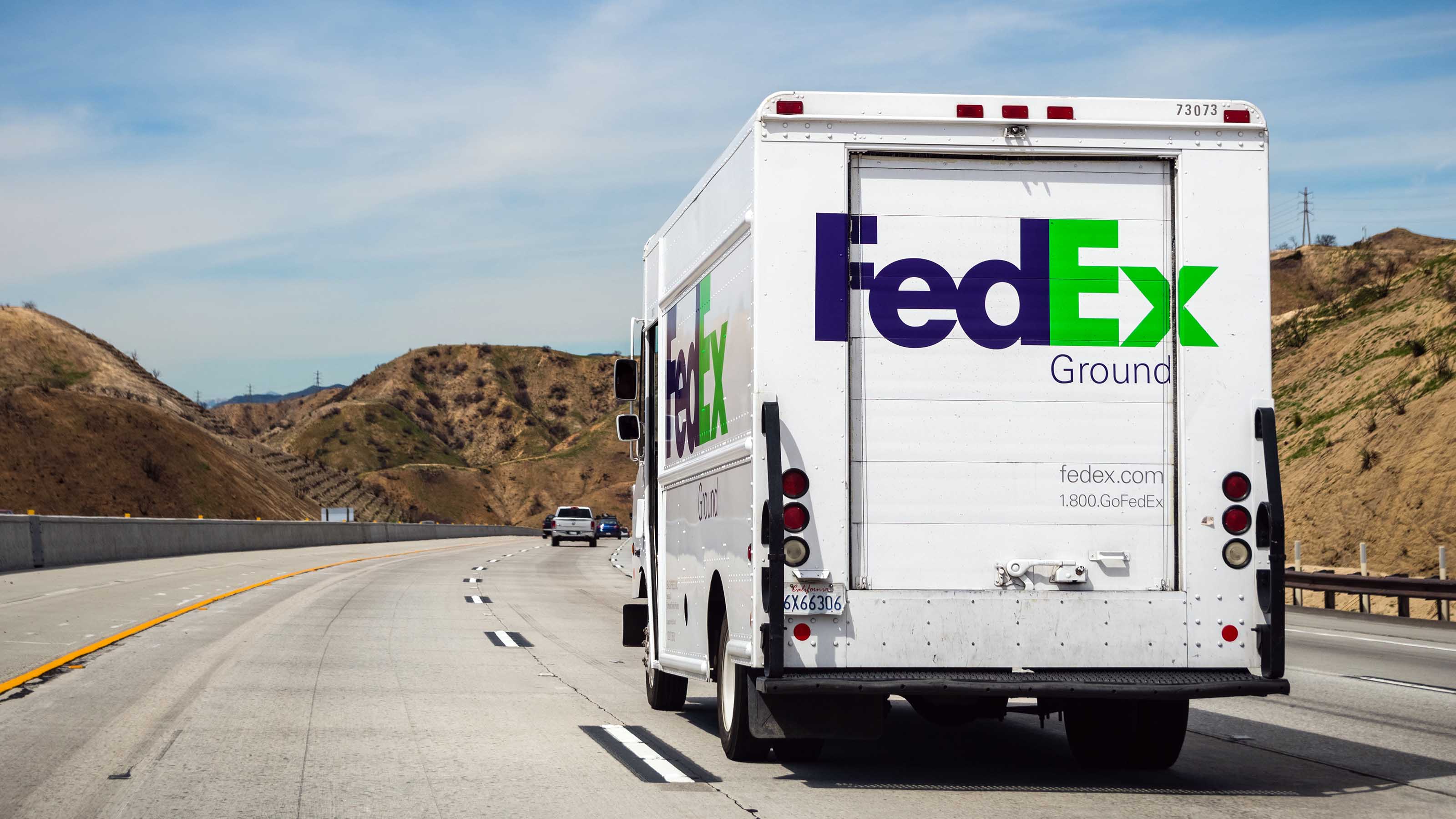
FedEx
- Market value: $77.2 billion
- Dividend yield: 0.9%
For FedEx (FDX, $291.20), the pandemic's biggest threat was whether it could keep up with domestic package volume growth, which was 67% in the November quarter. In addition to the new expenses that precede volume growth, FedEx was also challenged by severe winter weather during February, which reduced third-quarter operating income by an estimated $350 million.
That amid these challenges, third-quarter revenues were still up nearly 23% and net income up a spectacular 183% tells you a lot of things not just about the moment, but this blue chip's managerial and financial strength.
FedEx has debt, to be sure – some $22.8 billion of it. But just $97 million is due in the coming fiscal year, nearly a rounding error against FedEx's $8.9 billion of cash on hand. And that long-term debt is roughly equal to its shareholder equity.
FDX generated $23.32 in cash flow per share last year. It pays out $2.60 annually at its current rate. So the dividend itself is about as risk-free as it comes. But FDX has been conservative about lifting its payout – while it has grown by 160% from five years ago, the dividend actually hasn't budged since 2018.
Going forward? The pandemic forced an acceleration in e-commerce use – something people believe will slow down once the nation is vaccinated and can more freely visit brick-and-mortar locations. However, some analysts believe online-driven demand will continue.
"New e-commerce users will increase online shopping as a share of their total spending over time, in our view, and they won't dial back after the pandemic," wrote CFRA analyst Colin Scarola.
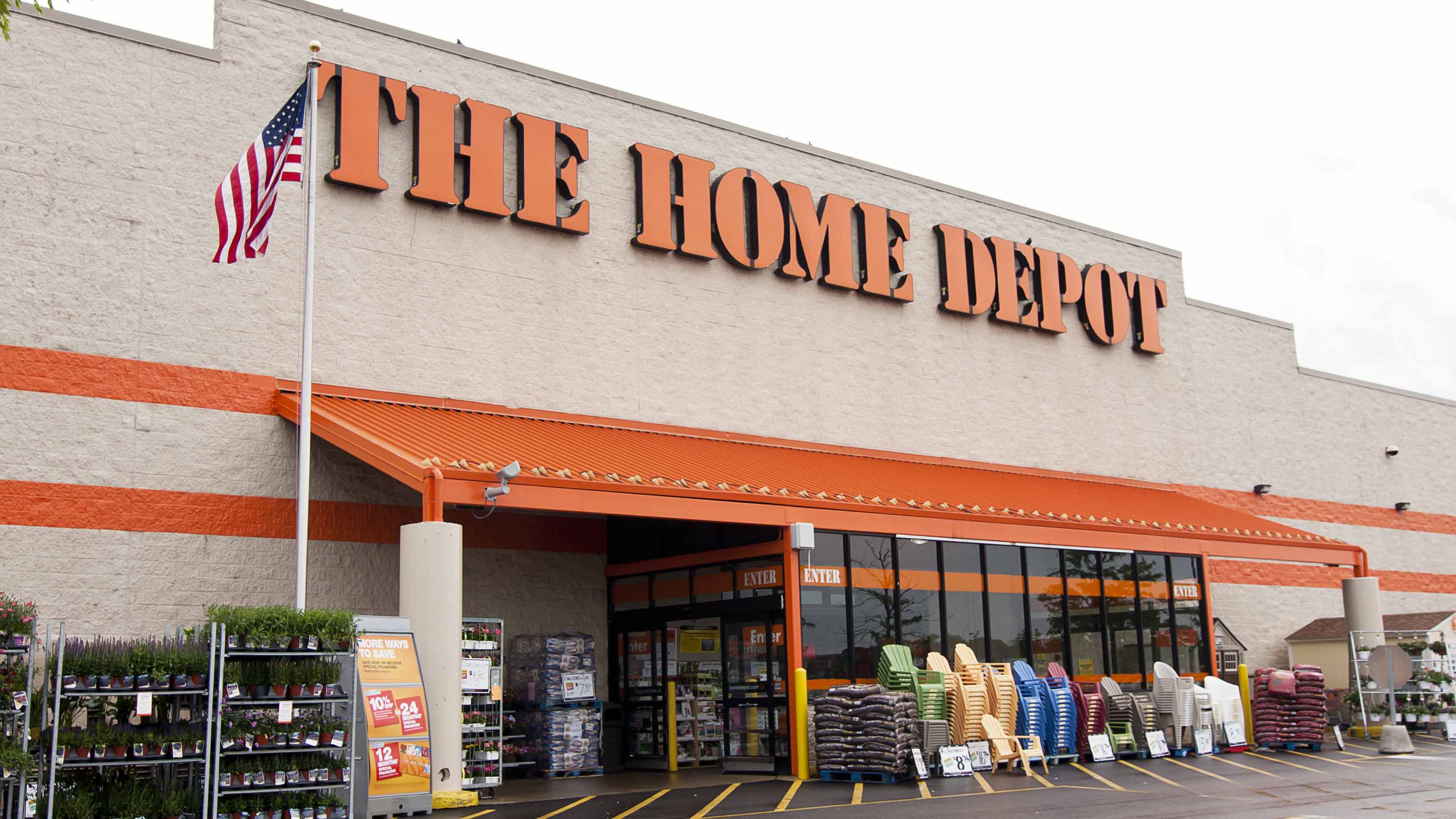
Home Depot
- Market value: $347.8 billion
- Dividend yield: 2.0%
Home Depot (HD, $322.74) has been a beneficiary of a massive reallocation of spending – one where people were forced to spend less on traveling, entertaining and eating out, so they plowed money into their homes.
Home Depot's 2020 revenues were $132.1 billion, a nearly 20% jump versus 2019. Net earnings of $12.9 billion were up more than 16%.
If luck is where opportunity and preparation meet, Home Depot was among 2020's luckiest blue chips. The company has spent years making investments in its supply chain, its wide product assortment and transforming itself into an omnichannel retailer that that can outfit any home improvement project a pandemic-stranded consumer might imagine.
Positioning itself to prosper when many retailers fell under the duress, ultimately flows back to the balance sheet. Home Depot does have about $36 billion of debt, but only a fraction of this debt, $1.4 billion, is due this year. Leases, which can be a large liability for a retailer with nearly 2,300 outlets, is a relatively modest $5.3 billion, and lease payments have always been baked into Home Depot's operating expenses.
Home Depot's cash flow, estimated to be nearly $14.55 per share for 2021, handily covers its quarterly dividend, which comes out to $6.60 annually. This cash flow, which has grown at 17% average annually for the past five years, has enabled Home Depot to get debt financing that stretches all the way out to 2056 with rates as low as 1.4%.

Lowe's
- Market value: $147.5 billion
- Dividend yield: 1.2%
It should come as no surprise that Lowe's (LOW, $204.57) performance last year mirrored Home Depot's. At Lowe's, revenues advanced 25% in 2020, U.S. same-store sales were up an incredible 29%, and profits per share jumped 41%.
For context, Lowe's sales are $122 billion with nearly 2,000 stores while Home Depot's sales are about $132 billion with almost 2,300 outlets.
Both blue chips are financially sound, but Lowe's looks a little more levered. Lowe's current debt and lease obligations of just under $1.6 billion are easily covered by the $5.1 billion of cash and short-term investments. But the total debt of about $26 billion against total equity of $1.4 billion seems mismatched. However, of the debt, $1.1 billion is due this year, and another $3.1 billion is due between now and the end of 2025. The remaining loans go out to 2050.
Thanks to Lowe's strong cash flow – more than $11 billion from operations in 2020 – it can easily cover interest (about $850 million in fiscal 2020), capital expenditures ($1.8 billion) and dividends ($1.7 billion). The difference between cash from operations and the other "non-discretionary" expenditures leave Lowe's plenty of room to repay and re-reissued debt as opportunities and needs arise.
Value Line's Gendler notes that while debt relative to equity shows strength, "generating increasing amounts of cash is ultimately what will keep a company competitive."
Meanwhile, this Dividend Aristocrat's modest payout, which has grown at an astounding 18% annual average over the past decade, appears plenty safe.
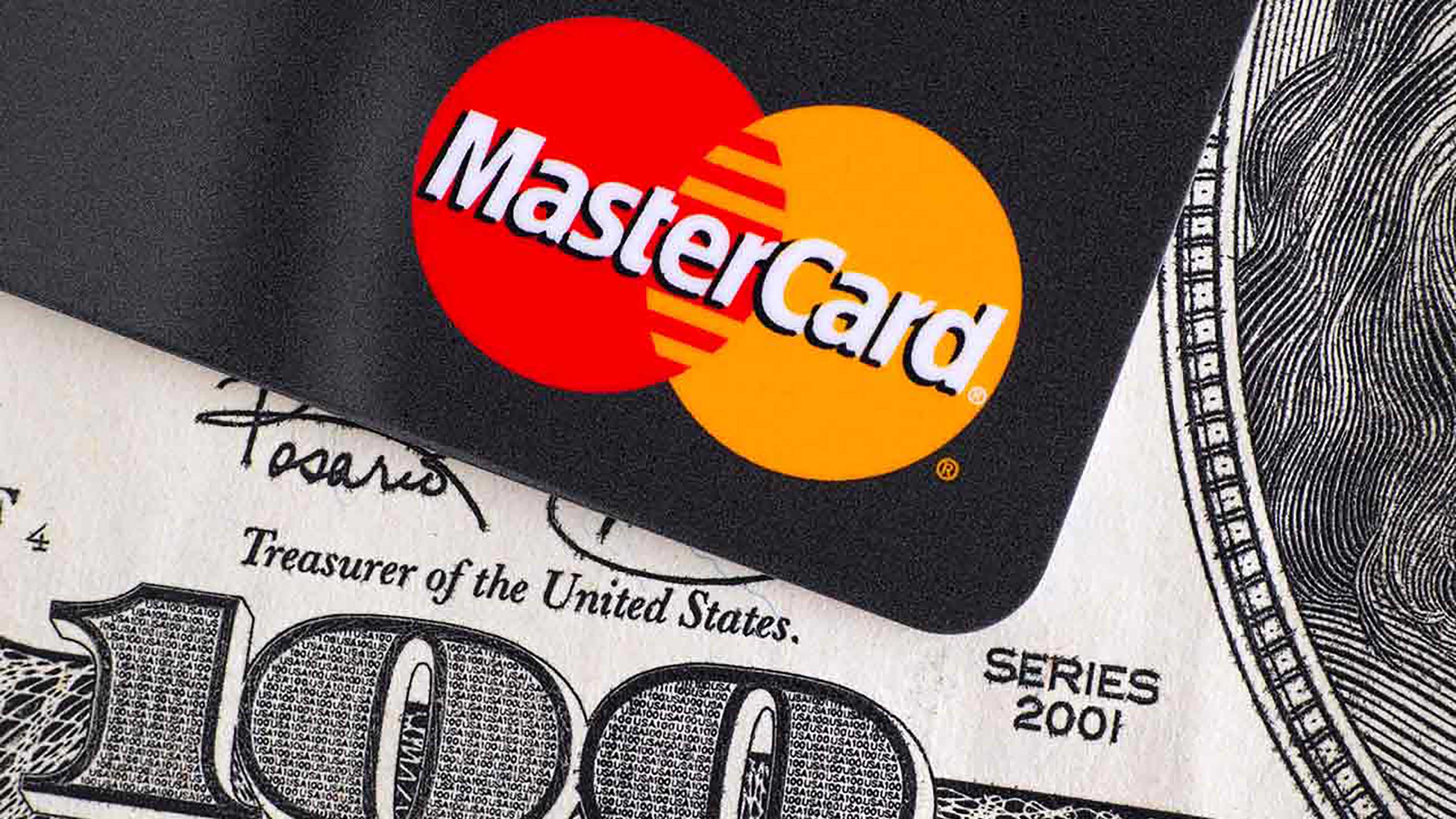
MasterCard
- Market value: $384.0 billion
- Dividend yield: 0.5%
Mastercard (MA, $386.49) and its rival Visa saw a dip in sales and earnings for 2020 for the same reason: pandemic-driven reductions in cross-border transaction volume and skittish consumers who spent less during the pandemic.
That shouldn't be a problem longer-term.
"We see a multi-year secular growth story for MA due to continuing shifts from analog cash and check payments to digital payments using mobile devices," says CFRA analyst Chris Kuiper.
When looking at Mastercard, it's important to remember that it's just a payments processor – it doesn't take credit risks like the banks that actually issue the cards. Instead, it just earns fees for processing and related services. Their balance sheets often resemble blue-chip technology companies more so than financial institutions.
And MasterCard has a terrific balance sheet. The company is sitting on $10.5 billion in cash versus $12 billion in long-term debt, while it only faces $650 million in debt due this year. It has another $1.2 billion in current liabilities, but a good portion of these – such as deferred revenue and future payout contingencies – won't necessarily eat cash.
MasterCard's operating activities did throw off $7.2 billion in cash last year, which covered $4.7 billion in share buybacks, $1.6 billion in dividends and $700 million in capital expenditures. And that OCF was off by about $1 billion from 2019. So, cash should recover, but even if it failed to do so quickly, Mastercard has access to plenty of debt capital to fund its expansion, grow the dividend and shrink the shares outstanding with buybacks.
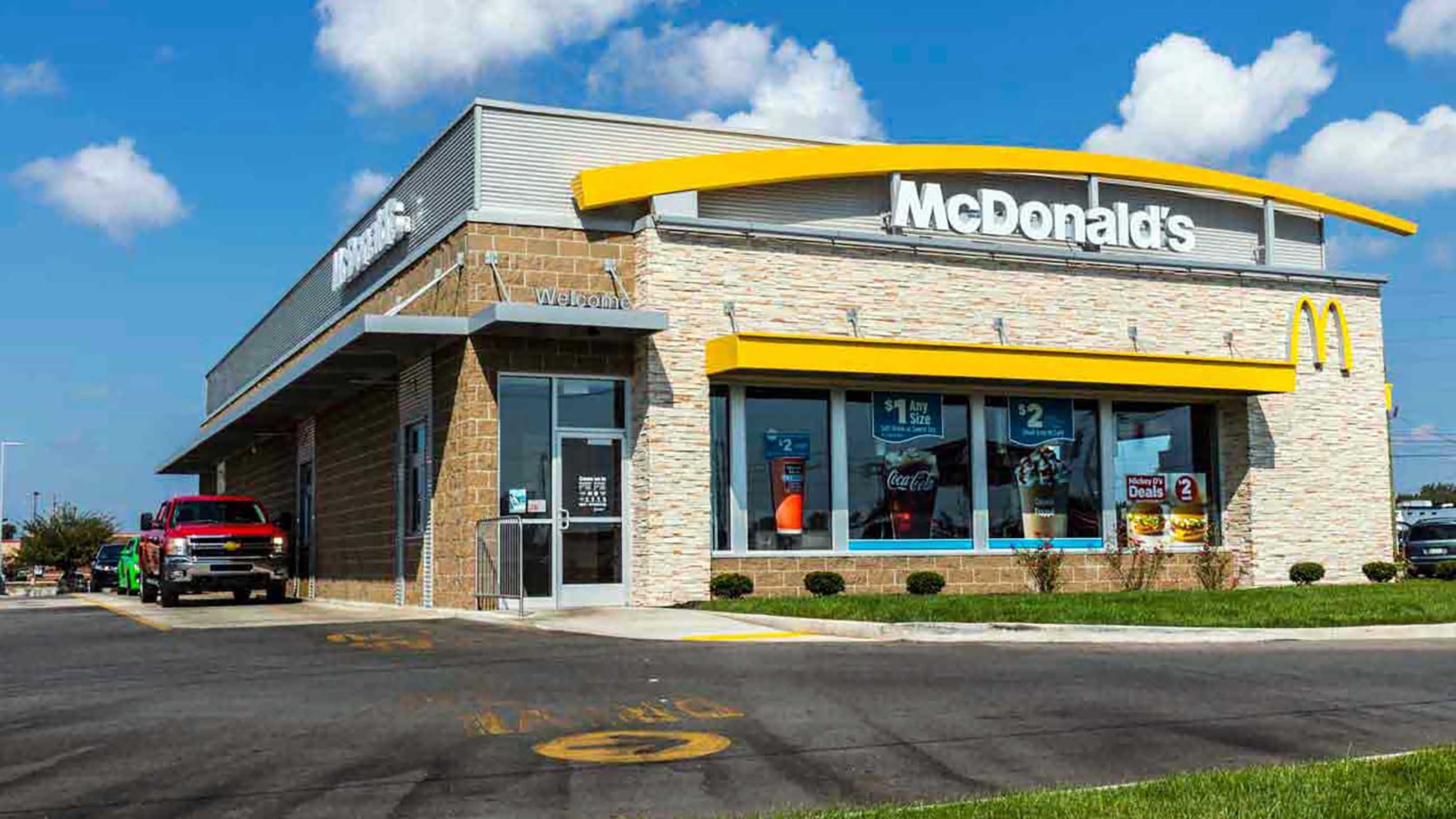
McDonald's
- Market value: $172.7 billion
- Dividend yield: 2.2%
McDonald's (MCD, $231.28) is another company in our grouping that has negative equity but is nonetheless rated A++ for financial strength by Value Line.
Remember, the basic balance sheet formula is shareholder equity = assets - liabilities, indicating that at McDonald's, liabilities are greater than assets, a seemingly precarious position.
But it's the composition of the liabilities that matters when assessing financial strength.
Yes, there's long-term debt of $35 billion, plus long-term leases of more than $13 billion. But only $2.7 billion of debt and $741 million of lease payments are coming due in the coming 12 months, which is easily covered by the $3.7 billion in cash on hand.
Not to mention, McDonald's cash flow from operations was $6.2 billion in 2020 and $8.1 billion in 2019. Remember: Cash flow from operations is not the same as free cash flow, which takes into account capital spending and financing activities. Still, with operations throwing off so much cash, McDonald's has wide latitude on how it spends and raises capital, the epitome of financial strength.
McDonald's, another Dividend Aristocrat, is among dividend investors' favorite blue chips. The payout, which is easily covered by free cash flow, has grown by about 8% annually on average for a decade.

McKesson
- Market value: $30.5 billion
- Dividend yield: 0.9%
McKesson (MCK, $191.37) bills itself as a "healthcare supply chain management solutions" company, but a lot of its business involves distributing drugs to hospitals, pharmacies and other institutions.
The company finished its third quarter for fiscal 2021 on Dec. 31, posting an $8.1 billion charge tied to opioid litigation. This expense delivered a $6.2 billion net loss for the quarter and dropped the company's shareholder equity from $5.3 billion at the end of fiscal 2020 to negative $300 million by the end of the calendar year.
However, the idea that an $8.1 billion charge has not materially impacted the prospects of a company suggests a strong balance sheet. McKesson has about $7.6 billion in debt, but the total of leases and borrowings due in 2021 total just $1.7 billion and could be easily covered by the $3.6 billion in cash the company has sitting in the bank at the end of its fiscal third quarter.
Thanks to increasing cash flow, which grew from $7.19 per share in 2010 to an estimated $24 per share in fiscal 2020, McKesson will likely have little trouble refinancing its debt further into the future, paying its dividend and making capital expenditures. These two metrics combined were estimated to be $3.70 per share in fiscal 2020.
Growing cash flow also gives McKesson easy access to debt funding to finance share buybacks, for which a $2 billion authorization was made in February. New Constructs Research rates McKesson's cash flow "very attractive" – the highest rating possible.
McKesson might provoke investor's ire for its role in the opioid crisis – though, in settlements, it did not admit wrongdoing – and the tax deduction that comes with the payout. But perhaps redemption could be offered to McKesson for putting its logistical might behind COVID-19 vaccine distribution, which management estimates could add as much as 75 cents per share in earnings during fiscal 2021.
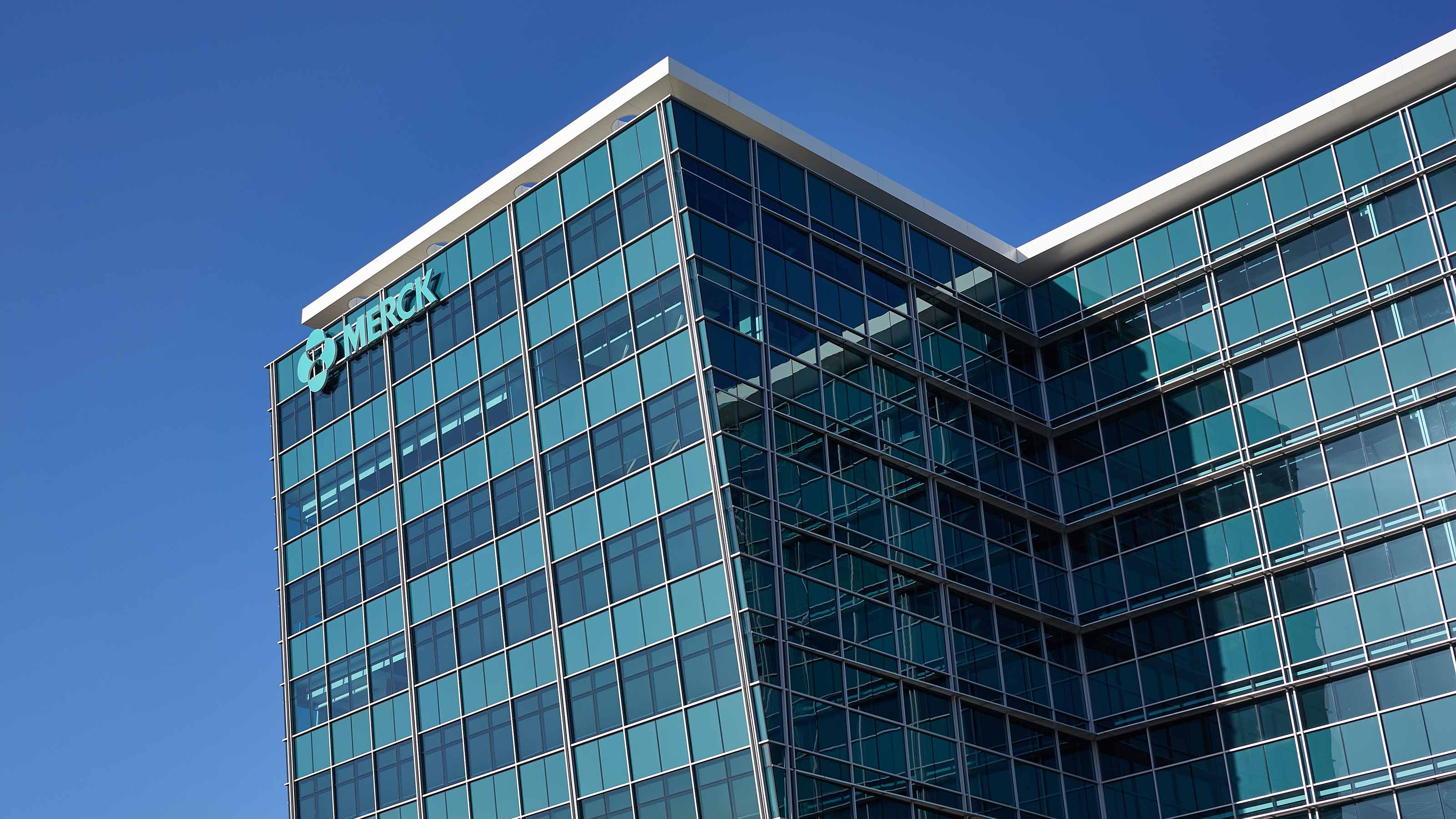
Merck
- Market value: $194.9 billion
- Dividend yield: 3.4%
Like with most Big Pharma blue chips, truly understanding Merck (MRK, $76.66) requires commitment and persistence. Its products address a variety of diseases in humans and animals, there's a seemingly endless parade of acquisitions and divestitures making year-over-year comparisons onerous, and the business requires investment in lengthy product pipelines whose progress is difficult to discern.
All that being said, it's easy to spot a strong balance sheet. And for the stamina the pharmaceutical business demands, financial strength is critical to success. Merck's long-term debt, at $25 billion, is about equal to its shareholder equity, but the $6.4 billion in debt due this year is easily covered by the more than $8 billion in cash on hand.
After 2021, Merck's debt gets more interesting – and for investors, better. The company's debt table shows no significant debt is due until 2025. And Merck's A-rated credit across a variety of ratings agencies has enabled the company to finance its loans at a wide variety of and at often attractive rates. For instance, one tranche of notes worth nearly $1 billion that's due in 2026 bears interest at just 0.75%.
The astute management of debt helps drive superior cash flow. Merck's healthy annual dividend of $2.60 per share is just 40% of its earnings per share (versus the 62% average coverage ratio for the S&P 500) and 30% of cash flow per share. The dividend yield, at 3.4% is healthy, and while growth is not notable, there's been a steady climb. Over the past five years, Merck's dividend has averaged 4.5% annual growth.

Microsoft
- Market value: $2.0 trillion
- Dividend yield: 0.9%
When a company has more than $132 billion in cash, it seems pretty likely that they have a strong balance sheet. In this regard, Microsoft (MSFT, $259.50) does not disappoint. This company is so liquid that it can pay all of its short-term obligations in the upcoming year six times over. Even if the world turns upside down (again), Microsoft appears to be one of the best-positioned blue chips to weather the storm.
Microsoft has been an able provider of sales and earnings growth, turning in average annual increases of 9.5% and 12.5%, respectively, over the past five years. And its guidance for 2021 continues this trend.
CFRA analyst John Freeman sees a bump in forecasted revenue growth rate to 14% over the next three years based on growth in Microsoft's cloud business Azure, its Office suite and LinkedIn.
But another, less obvious driver of Microsoft shares is an active buyback program. Last year, Microsoft bought back $20 billion of its own shares, and still has plenty of dry powder from its massive $40 billion authorization announced in late 2019.
Another notable feature for investors is Microsoft's dividend. At about 1%, it's a small yield, but the annual payments have been growing. And for investors who stay in the stock for a while, growth makes the yield more meaningful. Cash flow per share was more than three times the dividend in fiscal 2020, suggesting the dividend is safe.
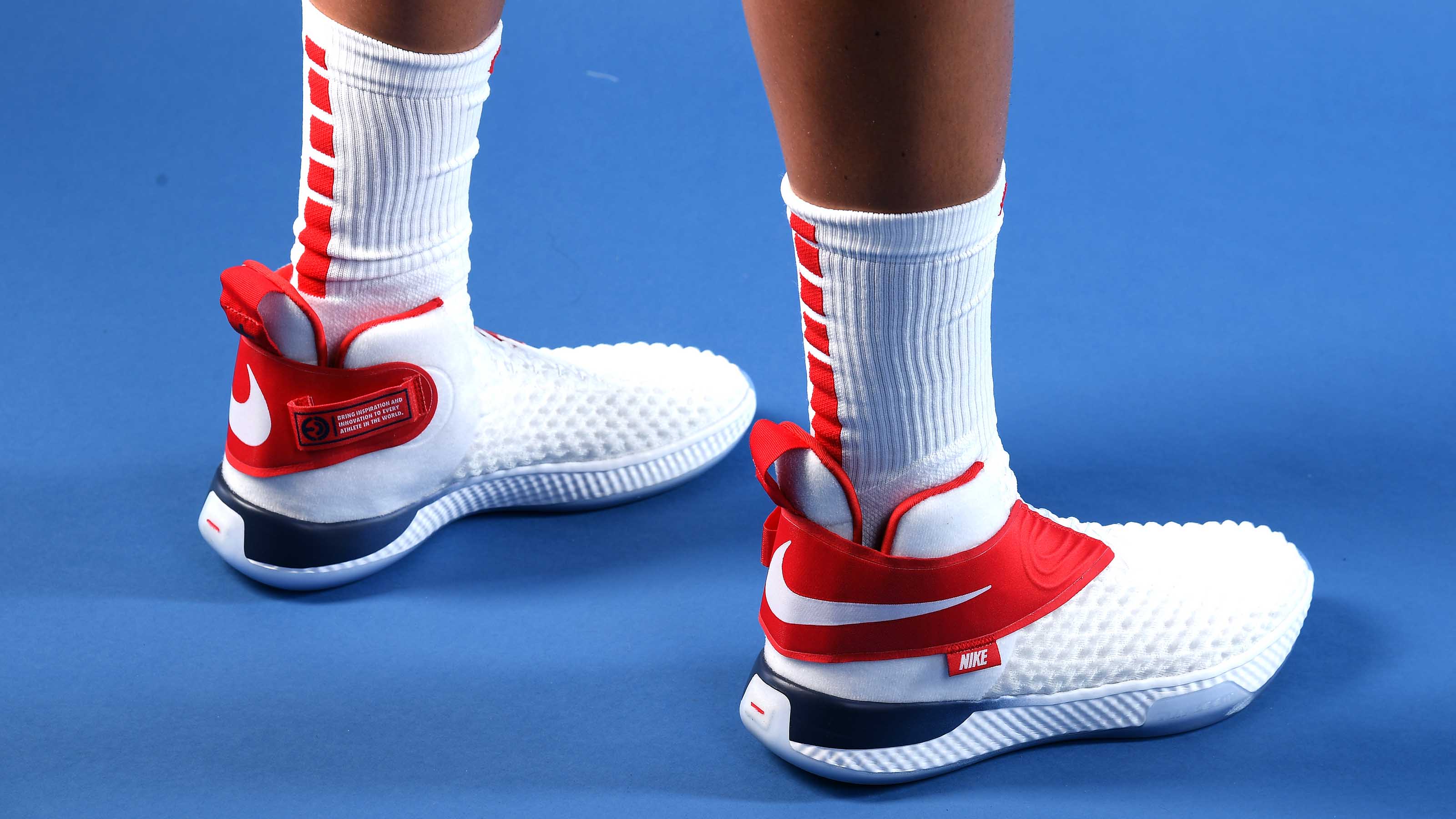
Nike
- Market value: $211.7 billion
- Dividend yield: 0.8%
Nike (NKE, $133.67), one of the apparel world's biggest blue chips, spent the two years leading up to the pandemic pouring money and resources into e-commerce, improving its digital interface operations and enabling consumers to customize products in numerous ways.
This investment has paid off. Earnings so far for fiscal 2021 (nine months ended in February) were roughly 66% higher than earnings for all of fiscal 2020, so there appears to be a lot more gravy to come.
Despite spectacular bottom-line gains, sales for the first nine months of fiscal 2021 are still about $5 billion below last year's revenues. Analysts expect that re-opening and more athletic activity will provide a nice boost to Nike's top line as it winds up the current fiscal year.
Further, Nike is hitting its stride with a strong balance sheet at a time when other apparel and accessory retailers are suffering. As of the company’s third-quarter ending Feb. 28, NKE was sitting on $12.5 billion in cash, with no debt coming due. And this cash on hand is 1.3x Nike's total long-term debt outstanding.
Plus, Nike's cash flow can easily support its investment in future growth. For fiscal 2020, which ended in May, cash flow per share of just over $3.00 was roughly twice its combined dividend and capital spending. And notably, fiscal 2020 was an off year, with diluted earnings per share off some 36%.
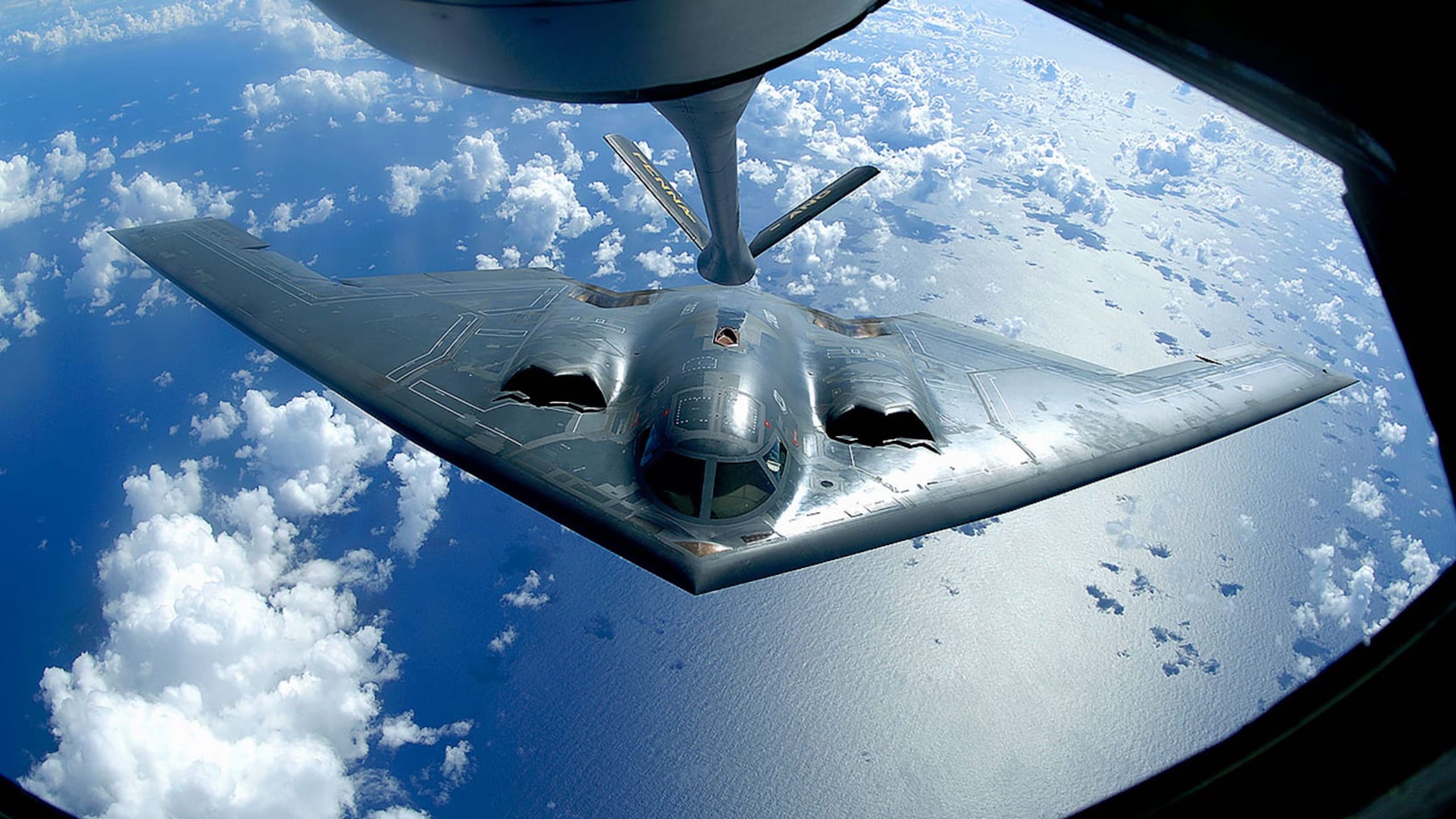
Northrop Grumman
- Market value: $55.5 billion
- Dividend yield: 1.7%
The story on Northrop Grumman (NOC, $344.59) might start and finish with the U.S. military budget, which at $740 billion for fiscal 2021 is one of the largest ever. Northrop Grumman is among the military contracting world's biggest blue chips, and is well-positioned to earn more business with increasing defense dollars.
But doing business with the government on a large scale takes, among other virtues, financial strength. Northrop Grumman's balance sheet is conservatively structured, with current assets exceeding current liabilities by a factor of 1.6 times (1.6x), with no debt coming due in 2021.
The company's long term-debt, about $14 billion is 1.3x its nearly $11 billion equity. By comparison, over at Boeing (BA), another blue-chip government contractor, there's so much debt, about $62 billion, that at the moment, the company has negative shareholder equity.
Meanwhile, Northrop's balance sheet is gaining strength. To wit, it is expected to use the proceeds from the sales of its IT business and mission support business along with its cash flow to retire about $2 billion of its $14 billion debt load. Cash flow per share of nearly $30, as forecast by Value Line, will easily fund anticipated capital spending and dividend payments totaling about $14 per share.
Not only is the dividend safe, but it's a grower, too. At $5.67 per share in fiscal 2020 (and indicated at $5.80 for 2021), it has grown at an average rate of nearly 13% annually over the last five years.
Even against a backdrop of lofty military spending, some analysts are cautious on earnings, with Ford Equity Research noting deceleration that could lead to outright declines.
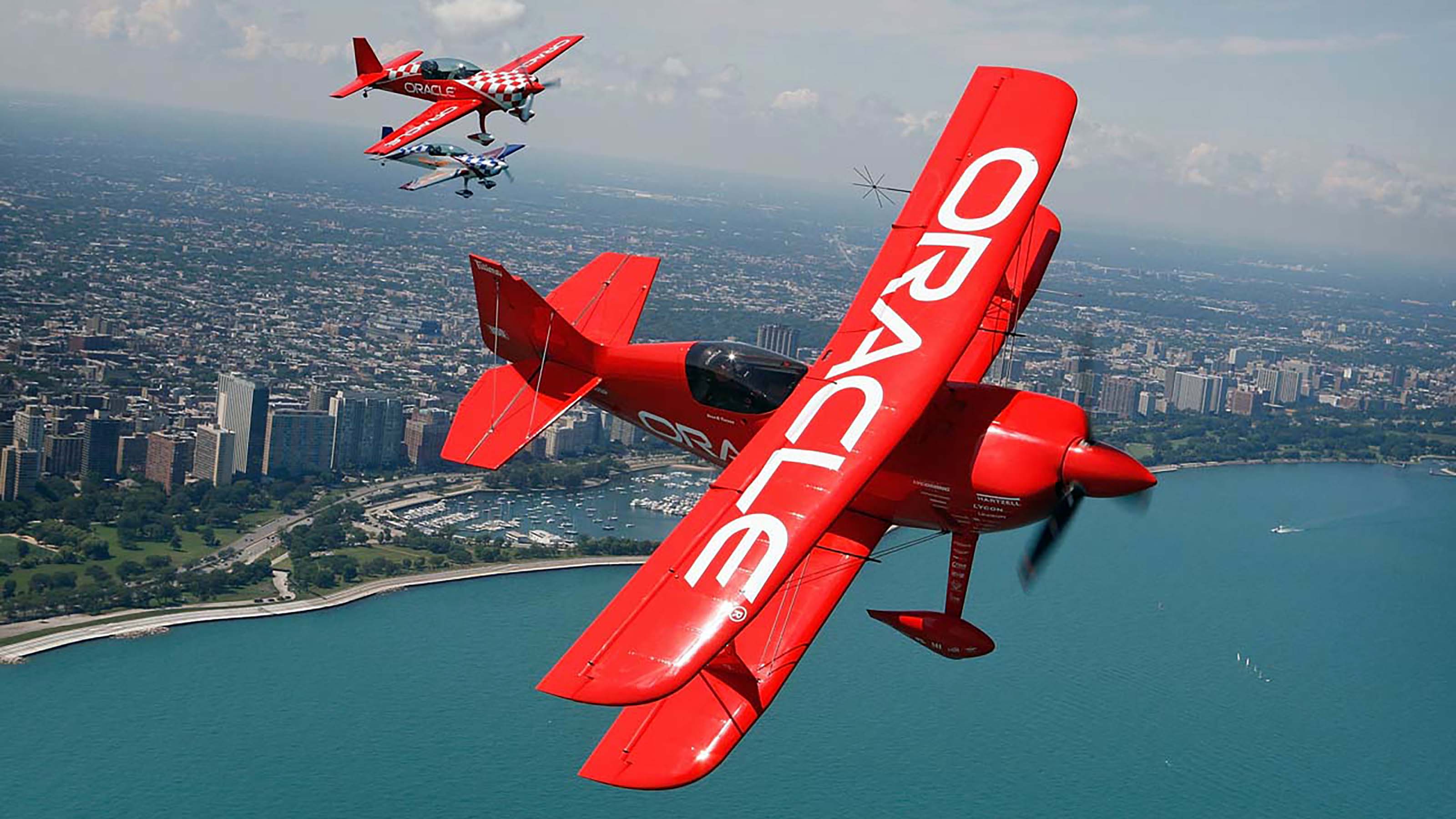
Oracle
- Market value: $226.6 billion
- Dividend yield: 1.6%
Oracle (ORCL, $78.29) was a go-go stock at the start of this century with a stock price to match. Since the deployment of cloud-based computing, Oracle's shares have come down to earth. Sales have vacillated between $37 and $40 billion since 2015, with range-bound earnings, as well.
But this is where a strong balance sheet and financial strength come in. With $38 billion in cash at the end of fiscal 2020, reasonable levels of short-term debt (though somewhat higher long-term levels) and steadily increasing cash flow, Oracle was able to easily finance the transformation of its enterprise software and database businesses to cloud offerings. Further, Oracle had the resources to wait out the time lag associated with the transition of its large installed user base to its new cloud offering.
Many analysts think Oracle is in the foothills of recognizing the benefits of its pivot.
"We forecast 3% annual revenue growth (in) fiscal 2021 and 2022," says Value Line's Charles Clark, "before accelerating to 8% in FY 23 when we project faster-growing cloud subscriptions to hit ~55% of total revenue, up from ~34% in FY 21."
The Street is a little more buoyant, with the consensus earnings-per-share forecast for fiscal 2021 up more than 16% from 2020 levels, according to data from S&P Global Market Intelligence.
Investors who decide to wait for the pivot in this blue chip could be rewarded. Oracle boasts a dividend yield of nearly 2%, and has boosted the payout by 26% average annually over the past decade.
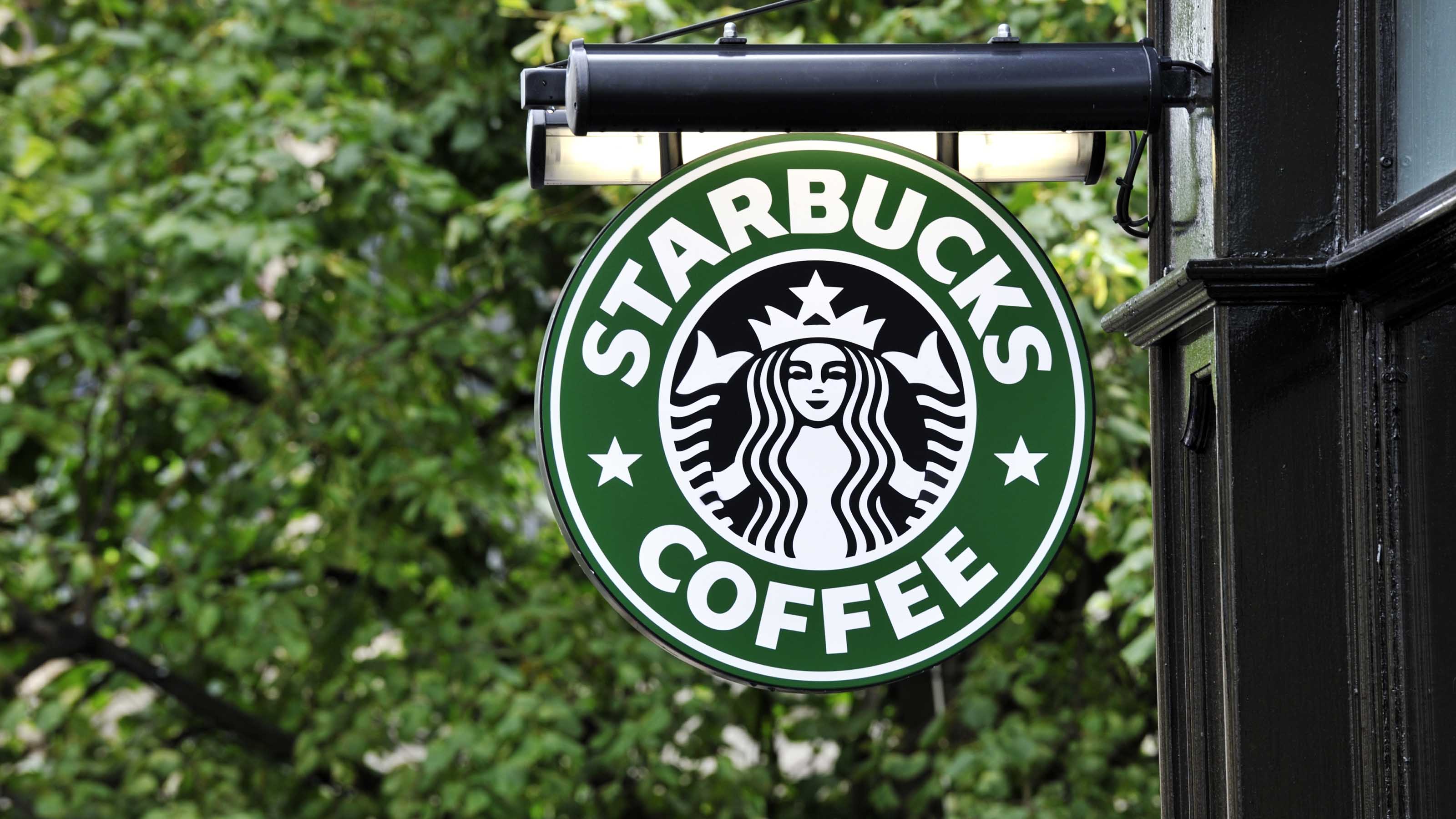
Starbucks
- Market value: $137.8 billion
- Dividend yield: 1.5%
Ubiquitous coffee chain Starbucks (SBUX, $116.66) had a rough go of it during the pandemic, and there are still challenges that lie ahead. As of its first fiscal quarter ending Dec. 27, global same-store sales were off 5%. Net sales for the quarter, at $6.7 billion, were also down 5%.
The effects can be seen most clearly in the firm's operating margin, which was off nearly 4 percentage points, or 460 basis points from the year prior – leading to earnings per share falling to 53 cents from 74 cents year-over-year.
Further, Starbucks ended its 2019 and 2020 fiscal years with negative equity, meaning its liabilities were greater than its assets – generally not the hallmark of a brawny balance sheet.
But Value Line's Gendler notes that Starbucks' negative equity was due to an increase in debt and an aggressive repurchase of its shares, noting the company has reduced its share count by 22% since 2013.
"Starbucks has materially boosted shareholder value," Gendler says. "Thanks to its successful operations, wide margins, significant cash flows and reasonable debt levels, Starbucks merits our highest rating for financial strength. The downside of how Starbucks got there is negative equity, but this will not hamper the company in any way."
Indeed, the 2,150 store openings planned for fiscal 2021, a 53% jump over last year, is a notable display of confidence following a bruising year.
Not to be forgotten, Starbucks is a dividend grower, boosting its payout by 22.5% average annually for the last five years.

Stryker
- Market value: $96.7 billion
- Dividend yield: 1.0%
Stryker (SYK, $256.85) is one of the world's largest makers of orthopedic implants and medical equipment. The company suffered during the pandemic as many "non-essential" orthopedic surgeries were delayed. In fiscal 2020, SYK saw net earnings fall more than 23%.
But it's in tough periods like these that Stryker's muscular balance sheet pays off for shareholders. Debt, at $13 billion, is backed by $13 billion in equity. And the portion due in this coming year is about $1.1 billion, easily covered by more than $7 billion in cash on the company's balance sheet.
Stryker has grown its cash flow over the past five years at an average annual rate of 15%, and in 2020, its operating activities generated $3.3 billion. The company spent $4.2 billion last year on acquisitions, but since 2017, Stryker's annual cash flow per share has been at least four times its capital expenditures.
Despite the troubling crosscurrents in the medical device business during 2020, Stryker lifted its dividend from $2.08 to $2.30 – the largest increase since 2009 – signaling management's confidence.
Similar to many of the blue chips on this list, Stryker's dividend is smallish at about 1%. But long-term holders have been rewarded, considering SYK has grown its payout at more than 19% average annually over the last decade. And with the cash dividend for 2020 at just 25% of earnings, there's plenty of cushion against more adversity in the medical device market.
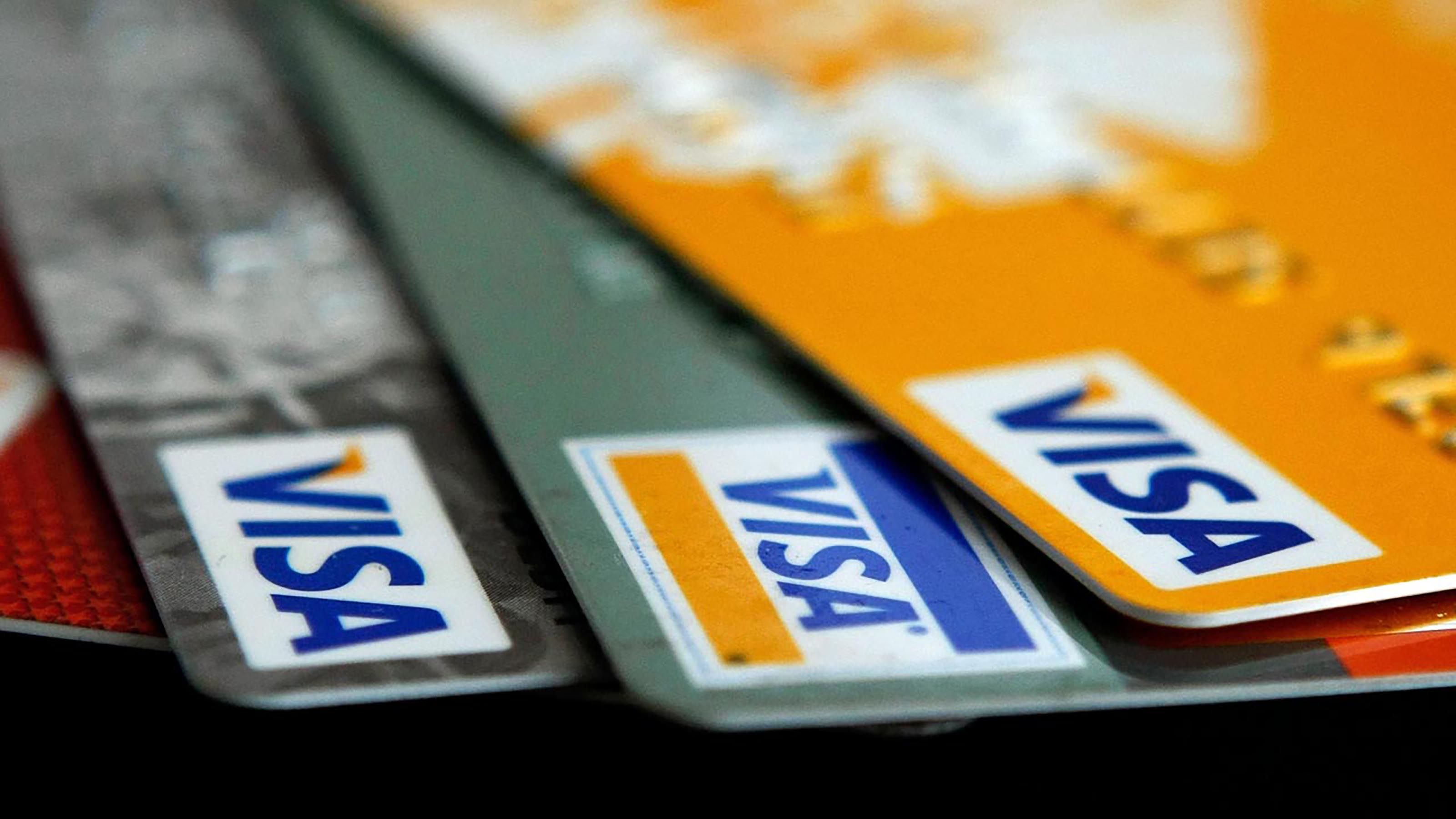
Visa
- Market value: $484.9 billion
- Dividend yield: 0.6%
Fiscal 2020 was a tough one for one of the credit card world's biggest behemoths: Visa (V, $266.28).
For the year ended Sept. 30, revenues were off 5%, earnings declined by 10% and payments volume posted a sluggish 2% increase. Malaise carried forward into the first quarter, with revenues off 6% and net income down 4%, though transaction volume was up a more promising 5%.
In both cases, revenue declines were driven by lower cross-border volume, unsurprising since one of the first economic victims of COVID-19 was international trade.
Visa shares have risen about 33% over the past year, perhaps reflecting the view that payments volatility comes with the territory in the credit-card business. And, come what may, Visa has nearly unrivaled financial strength to meet these challenges head-on.
And not only does Visa have a lot of cash, it generates a lot of cash, too. Cash flow per share of $5.44 in 2020 – an off year – was nearly five times the annual dividend, and more than three times the dividend and capital expenditures combined. This means cash flow, which has grown about 21% on average annually for the last five years would have to retreat to 30% of previous levels before management might question pulling back on dividends or making an investment for the future.
With Visa sitting on $16 billion in cash and just $3 billion in debt due this year, the dividend is covered many times by cash on hand.
The average annual dividend yield of 0.7% is tiny. But for long-term investors, it offers upside because Visa has increased its dividend every year for a decade, from $0.13 to $1.22, nearly a ten-bagger.
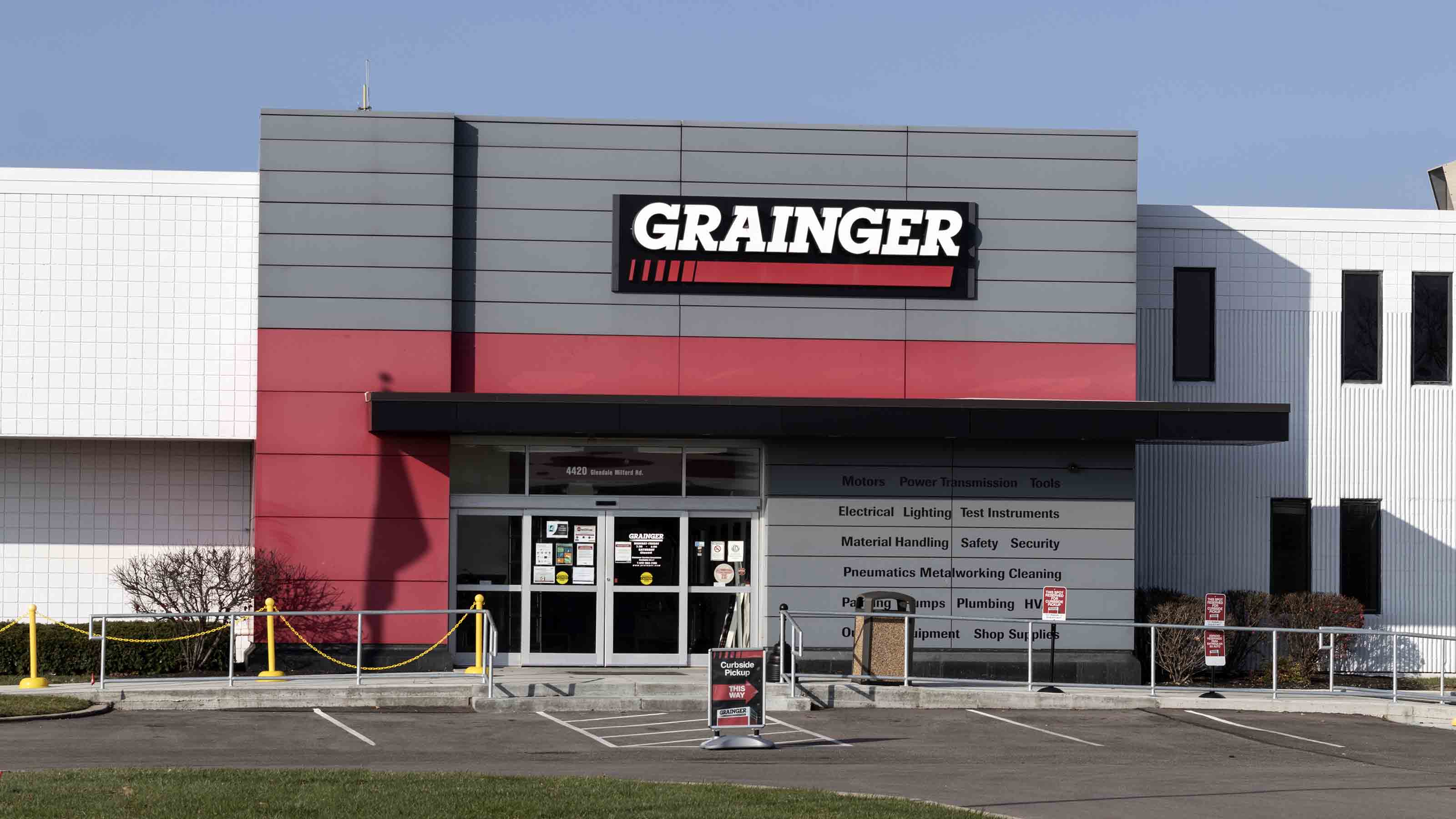
W. W. Grainger
- Market value: $21.2 billion
- Dividend yield: 1.5%
W.W. Grainger (GWW, $404.45), which distributes maintenance, hand tools, repair supplies such as lighting and myriad other products, was hit hard by the pandemic. For 2020, net earnings were off 18%.
But the company seems to have turned a corner, with the fourth quarter of its last fiscal year showing promise. Earnings were up 64% versus the year-ago period, though net sales were flat-ish at 3% growth.
Grainger shares took it all in stride, though, and are up nearly 100% since last March. This might be attributable, in part, to a strong balance sheet and other markers which indicate that the pandemic, while disruptive, was not debilitating for the company.
Grainger paused buybacks last April but resumed them again in October, authorizing the purchase of 5 million more shares and tipping off management's optimism. Five million shares is about 9% of Grainger's roughly 54 million shares outstanding.
This Dividend Aristocrat doesn't offer a big yield, but its payout has grown about 5% each year since 2015. With cash flow north of $20 per share, Grainger's $1.53-per-quarter dividend appears safe.
Get Kiplinger Today newsletter — free
Profit and prosper with the best of Kiplinger's advice on investing, taxes, retirement, personal finance and much more. Delivered daily. Enter your email in the box and click Sign Me Up.

-
 Stock Market Today: Stocks Gain on Tech, Auto Tariff Talk
Stock Market Today: Stocks Gain on Tech, Auto Tariff TalkThe Trump administration said late Friday that it will temporarily halt tariffs on some Chinese tech imports.
By Karee Venema Published
-
 Sam's Club Plans Aggressive Expansion: Discover Its New Locations
Sam's Club Plans Aggressive Expansion: Discover Its New LocationsSam's Club expansion plans will open up to 15 new stores each year. Learn where they plan to open in 2025.
By Sean Jackson Published
-
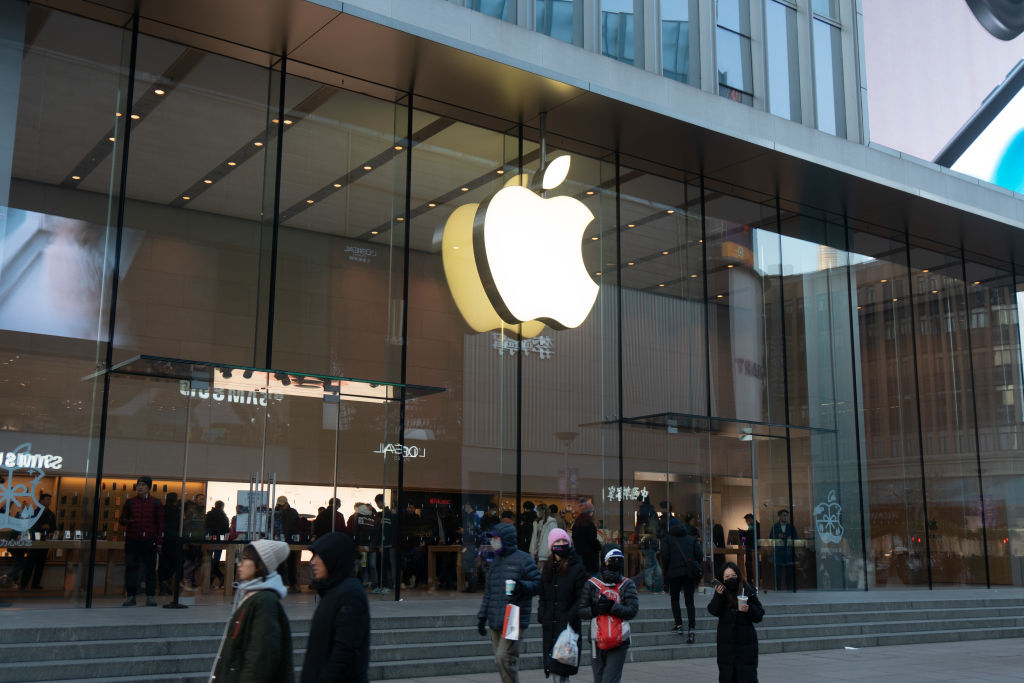 Wall Street Is Worried About Apple Stock. Should You Be Too?
Wall Street Is Worried About Apple Stock. Should You Be Too?Analysts expect Trump's sweeping tariffs to have an outsized impact on Apple stock. How concerned should investors be?
By Karee Venema Last updated
-
 The Stock Market Is Selling Off. Here's What Investors Should Do
The Stock Market Is Selling Off. Here's What Investors Should DoInvestors started fleeing the equities market en masse in response to the Trump administration's "jaw-dropping" tariffs. But the experts say don't panic.
By Karee Venema Last updated
-
 Stock Market Today: Dow Rises 854 Points From Its Intraday Low
Stock Market Today: Dow Rises 854 Points From Its Intraday LowIf there's one thing markets hate, it's uncertainty. But uncertainty is all they're getting these days.
By David Dittman Published
-
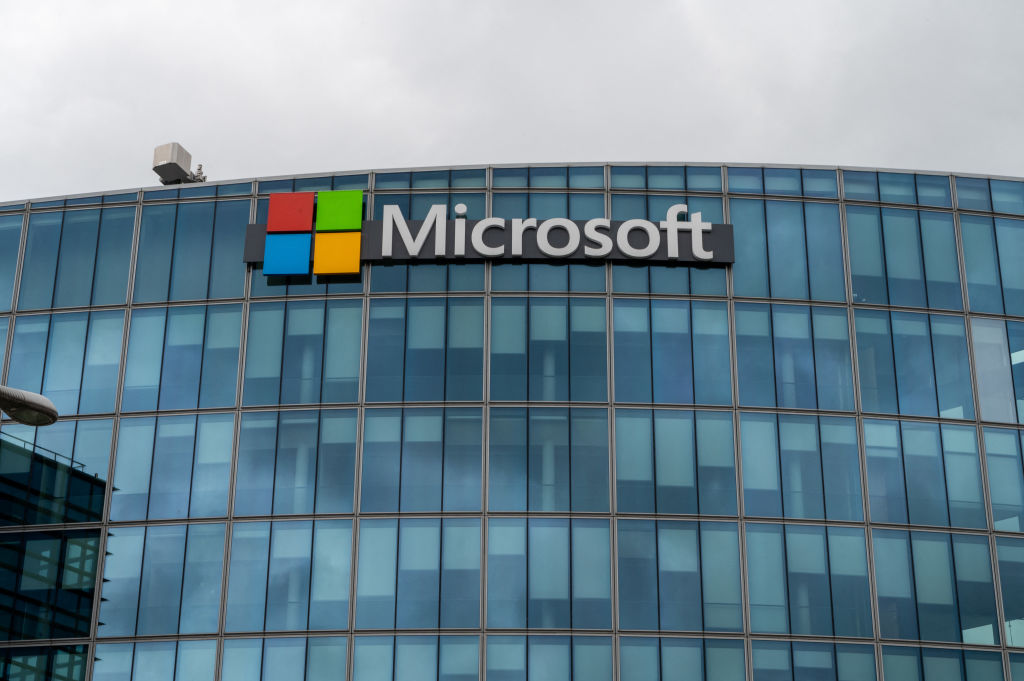 Microsoft Stock: Innovation Spurs Its 100,000% Return
Microsoft Stock: Innovation Spurs Its 100,000% ReturnMicrosoft's ability to recognize the "next big thing" has allowed sales – and its share price – to grow exponentially over the years.
By Louis Navellier Published
-
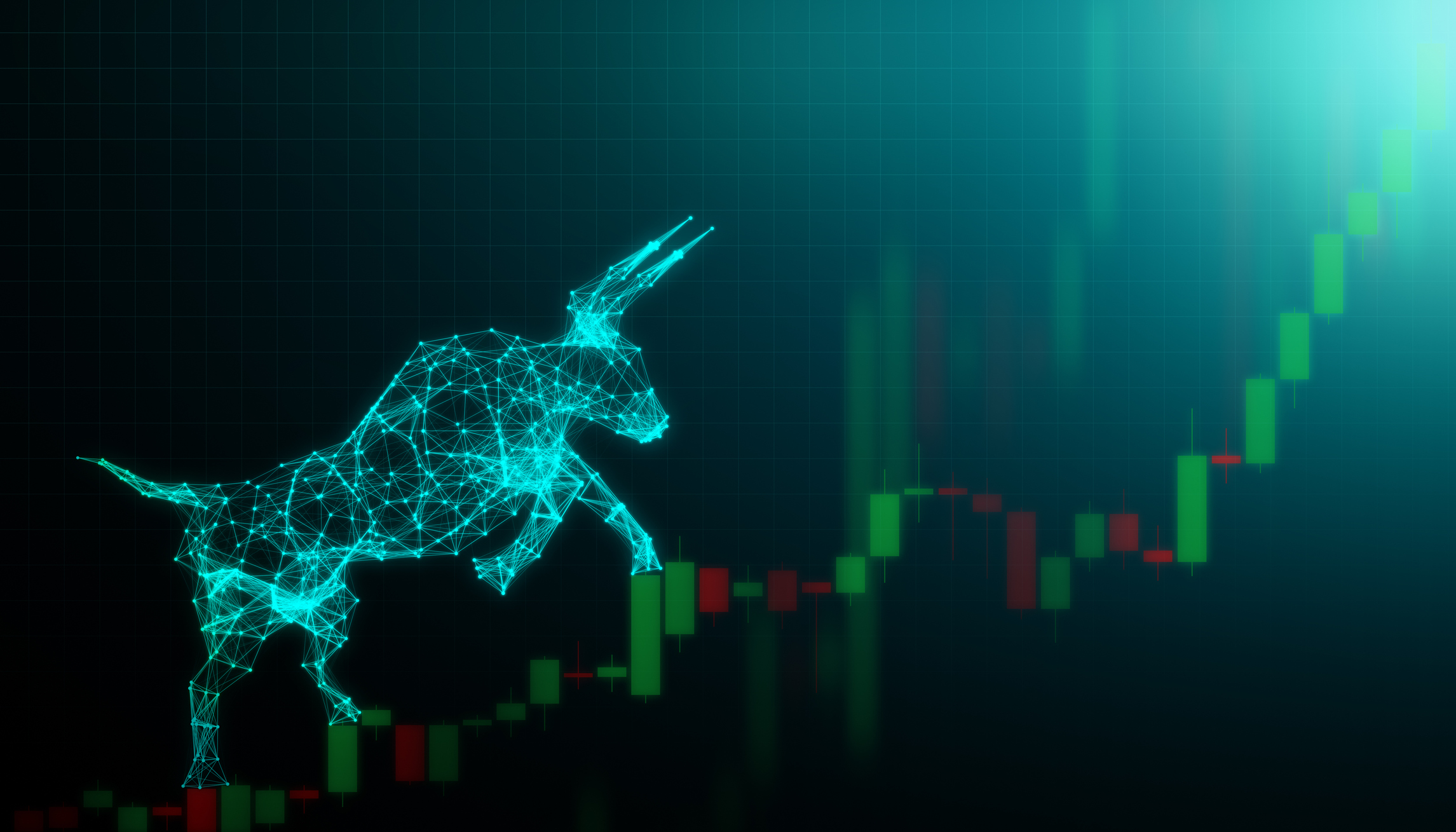 Stock Market Today: Markets Celebrate Trump's Tariff Détente
Stock Market Today: Markets Celebrate Trump's Tariff DétenteConsumer discretionary stocks led 10 of the 11 S&P 500 sector groups well into the green.
By David Dittman Published
-
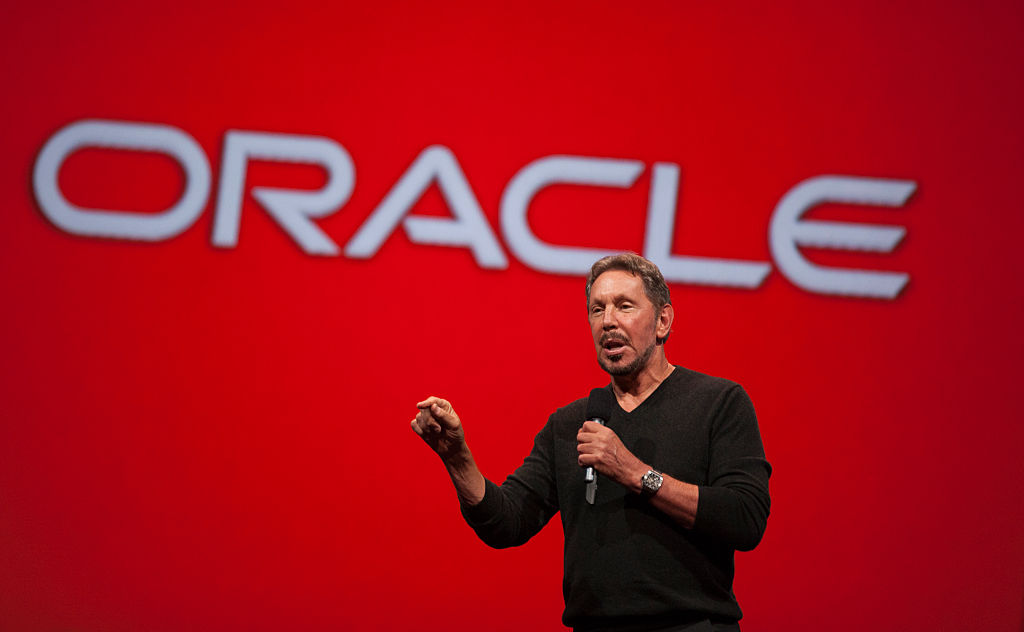 Relentless Leadership Drives Oracle Stock's 100,000% Return
Relentless Leadership Drives Oracle Stock's 100,000% ReturnOracle's share price growth also benefits from the company's commitment to innovation and tech investment.
By Louis Navellier Published
-
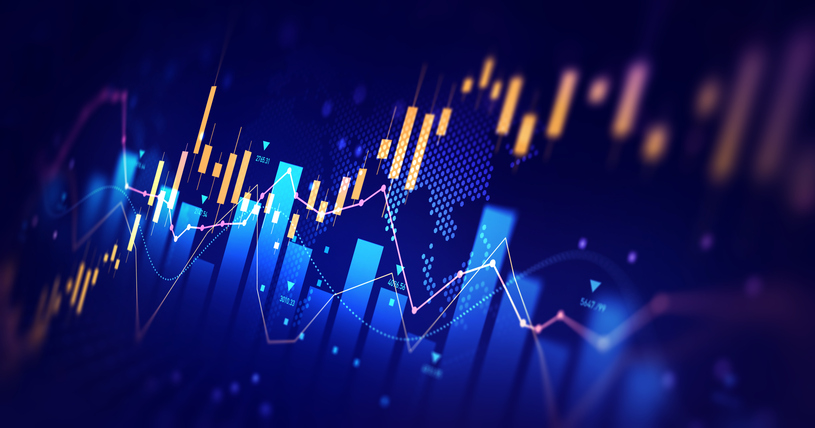 Stock Market Today: Stocks Swing Higher After Early Slump
Stock Market Today: Stocks Swing Higher After Early SlumpNegative earnings reactions for Nike, FedEx and Micron kept pressure on the main indexes, though.
By Karee Venema Published
-
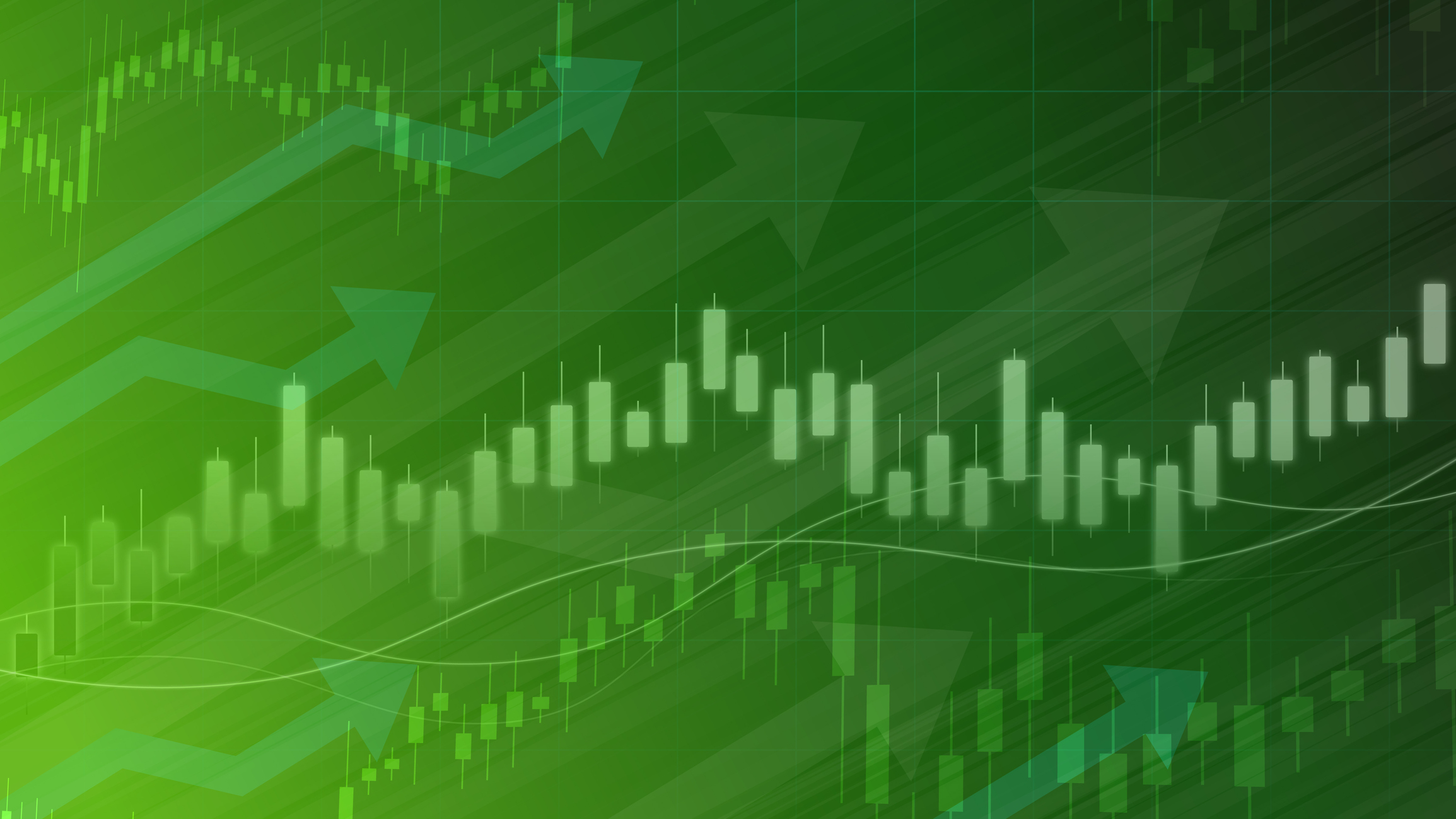 Stock Market Today: Stocks Enjoy a Fed Day Relief Rally
Stock Market Today: Stocks Enjoy a Fed Day Relief RallyThe question now is whether Jerome Powell and other policymakers can get the balance right given all the new noise.
By David Dittman Published
